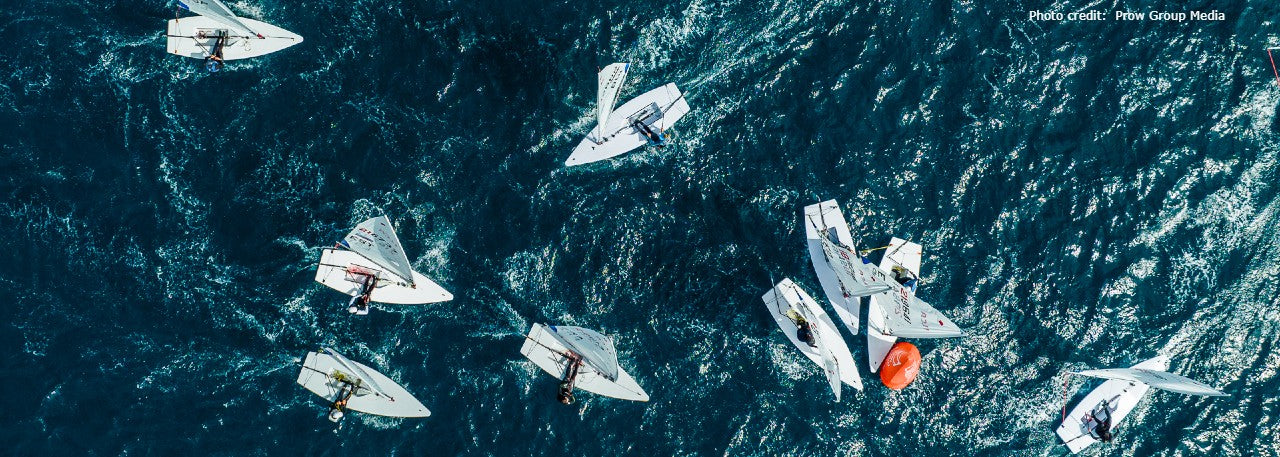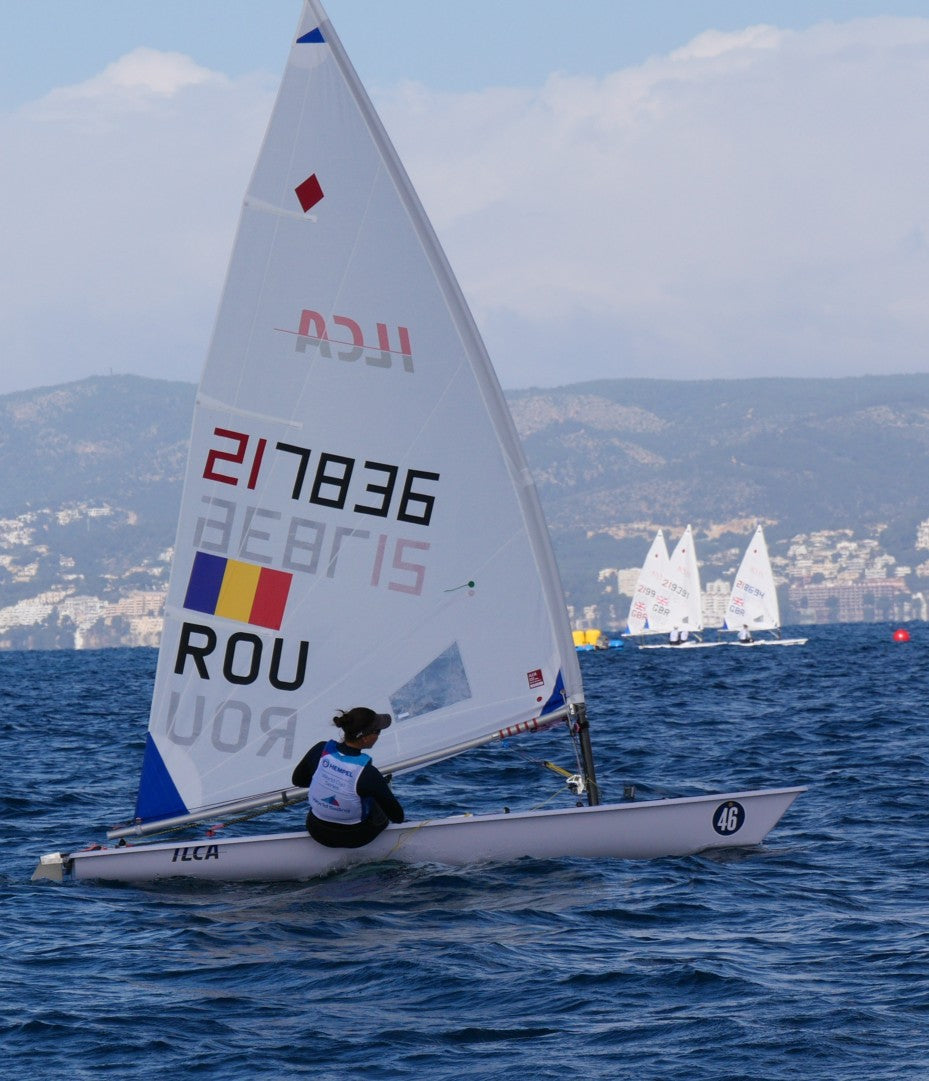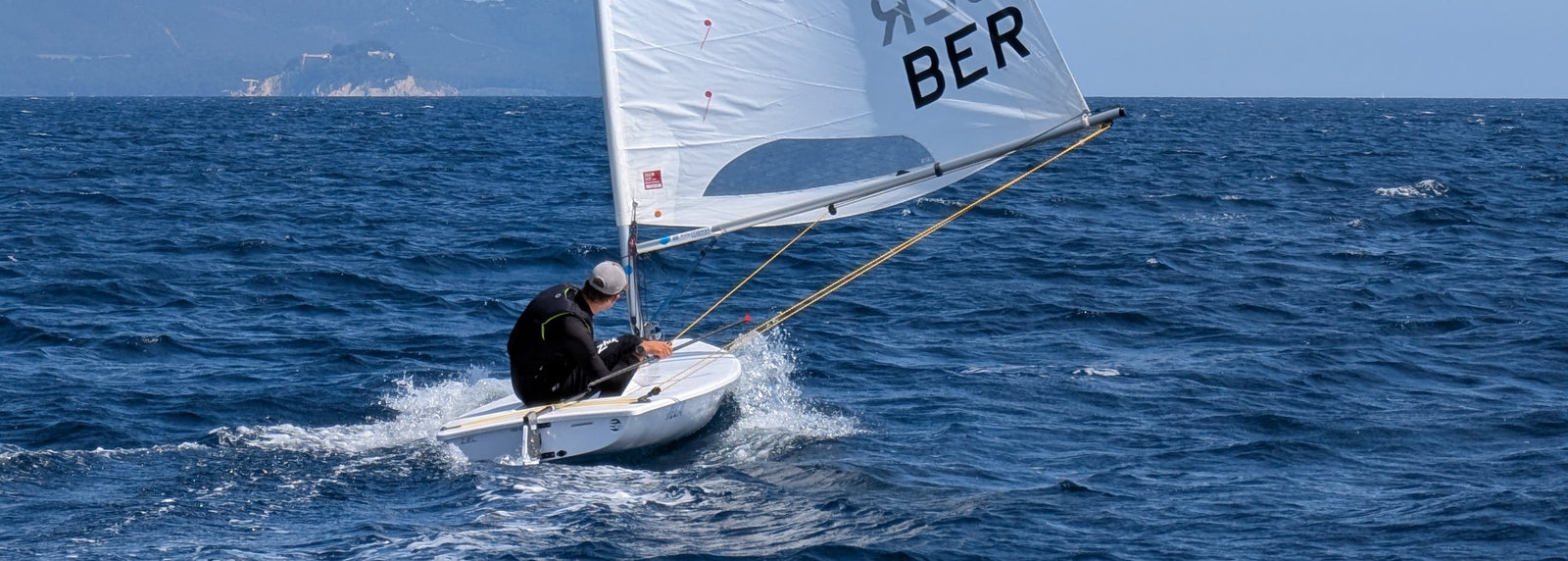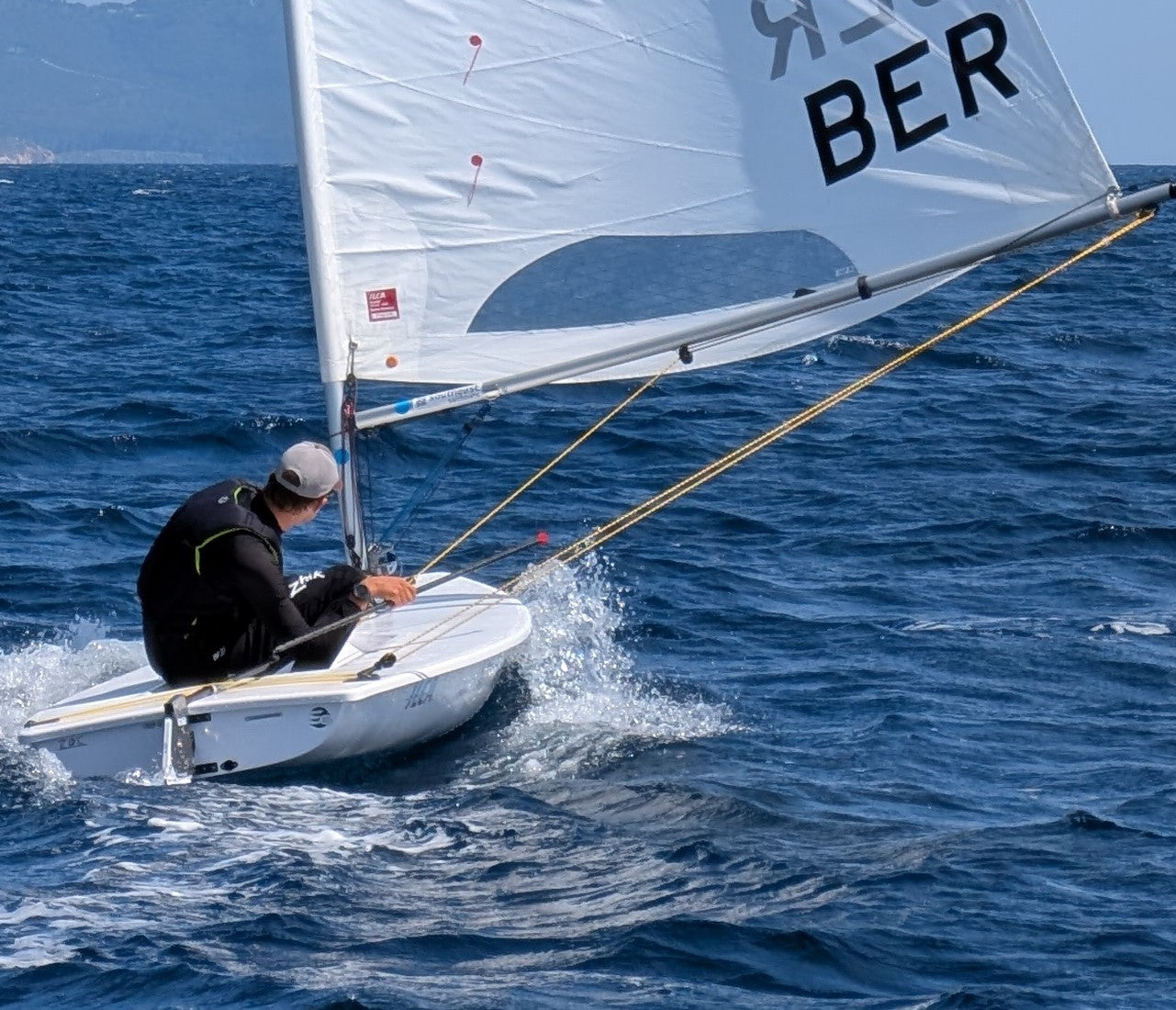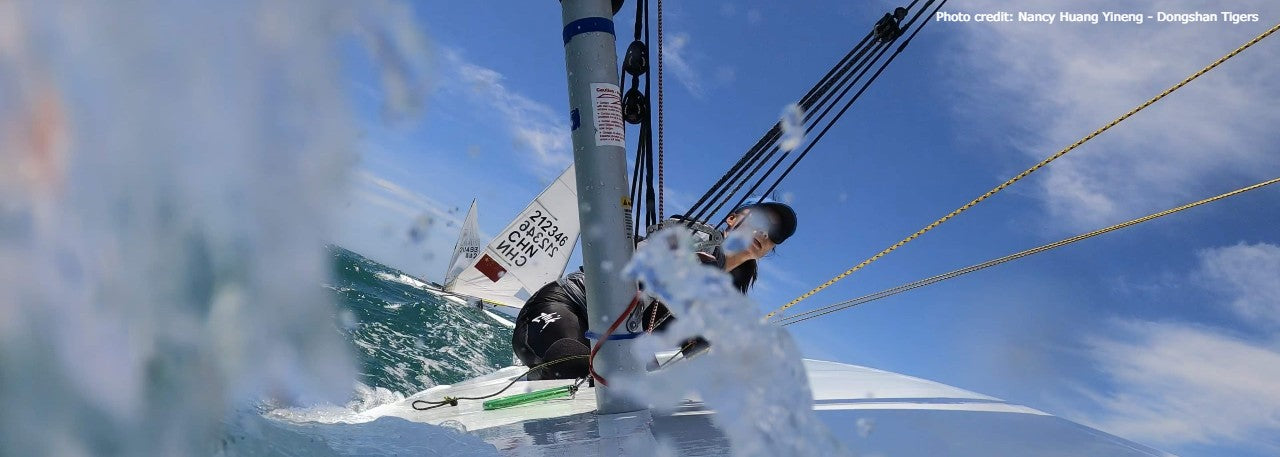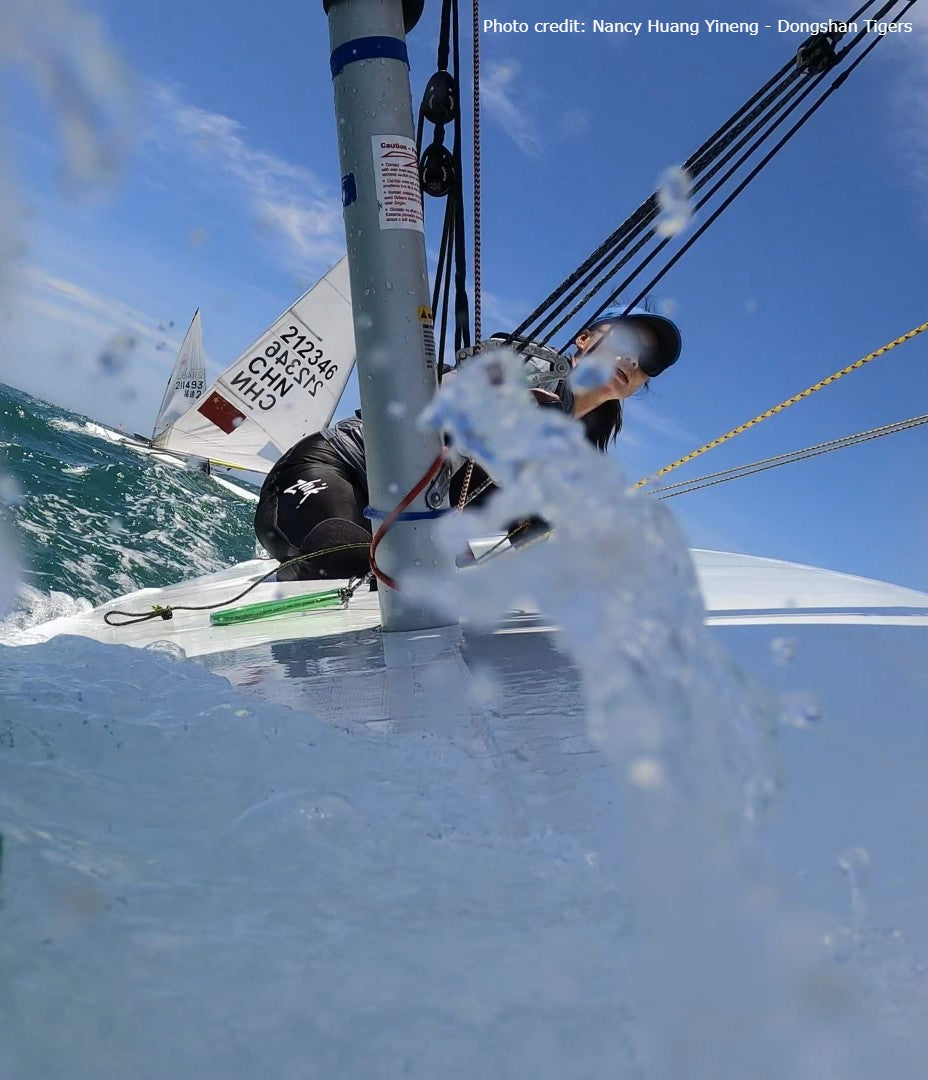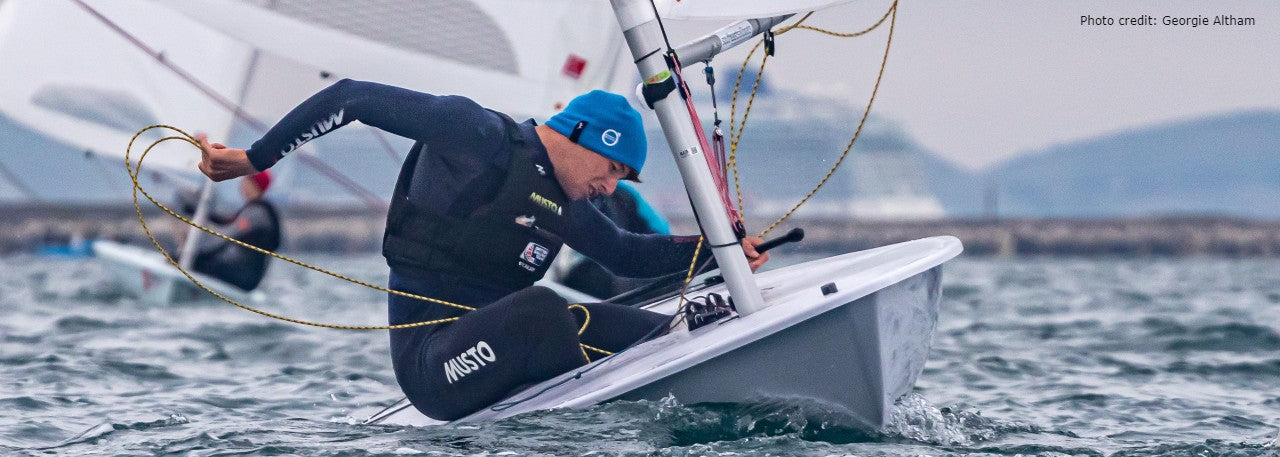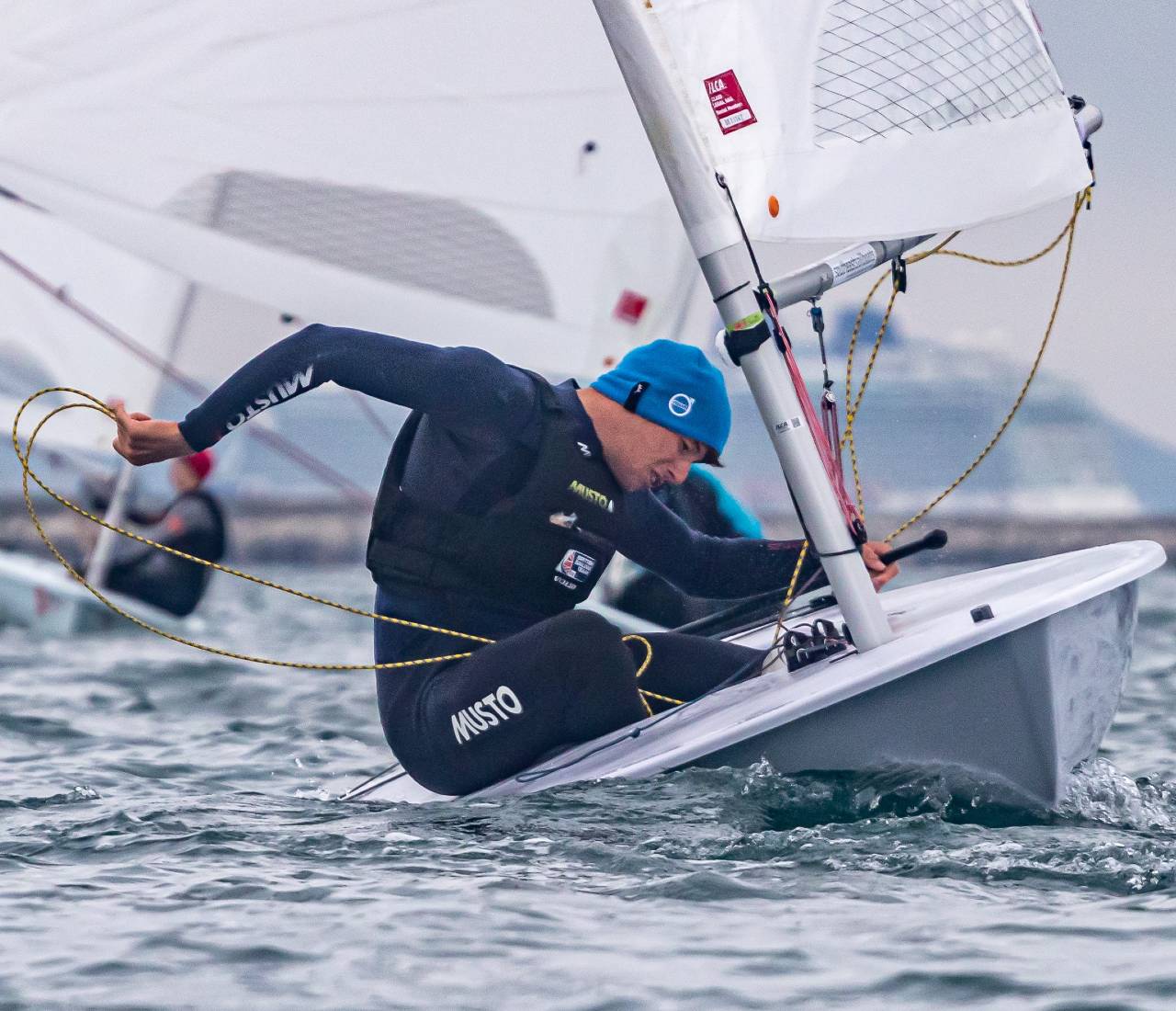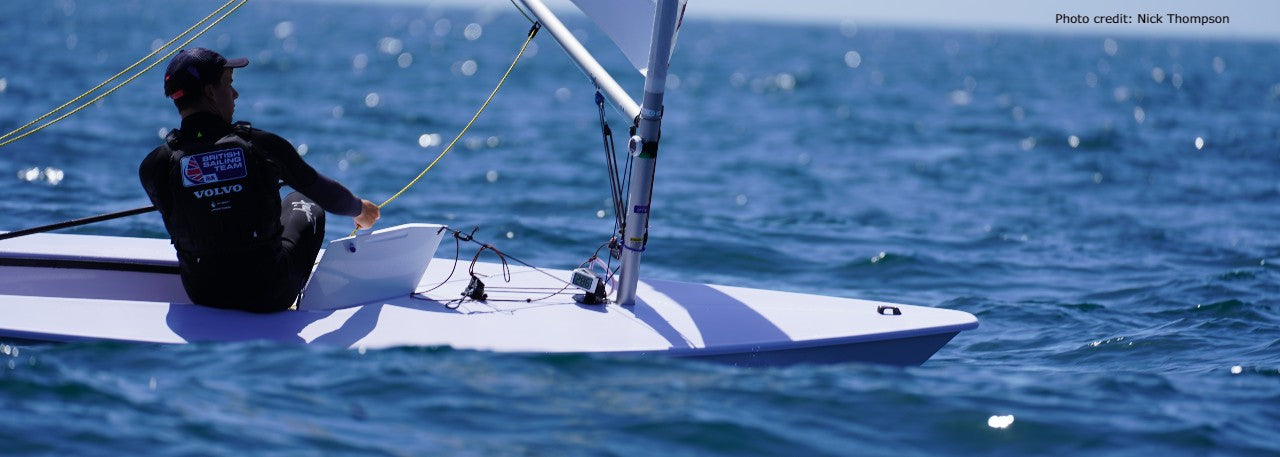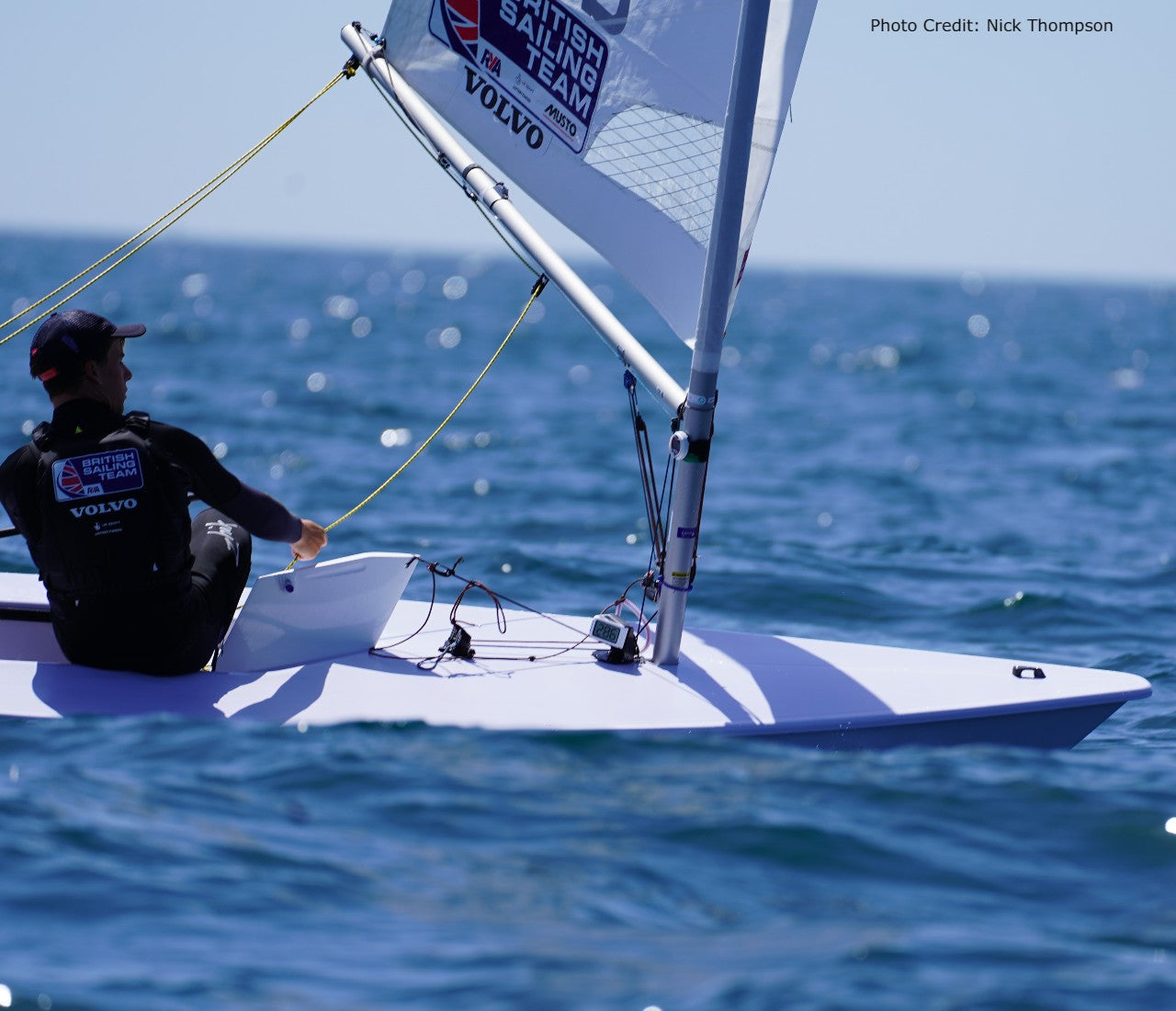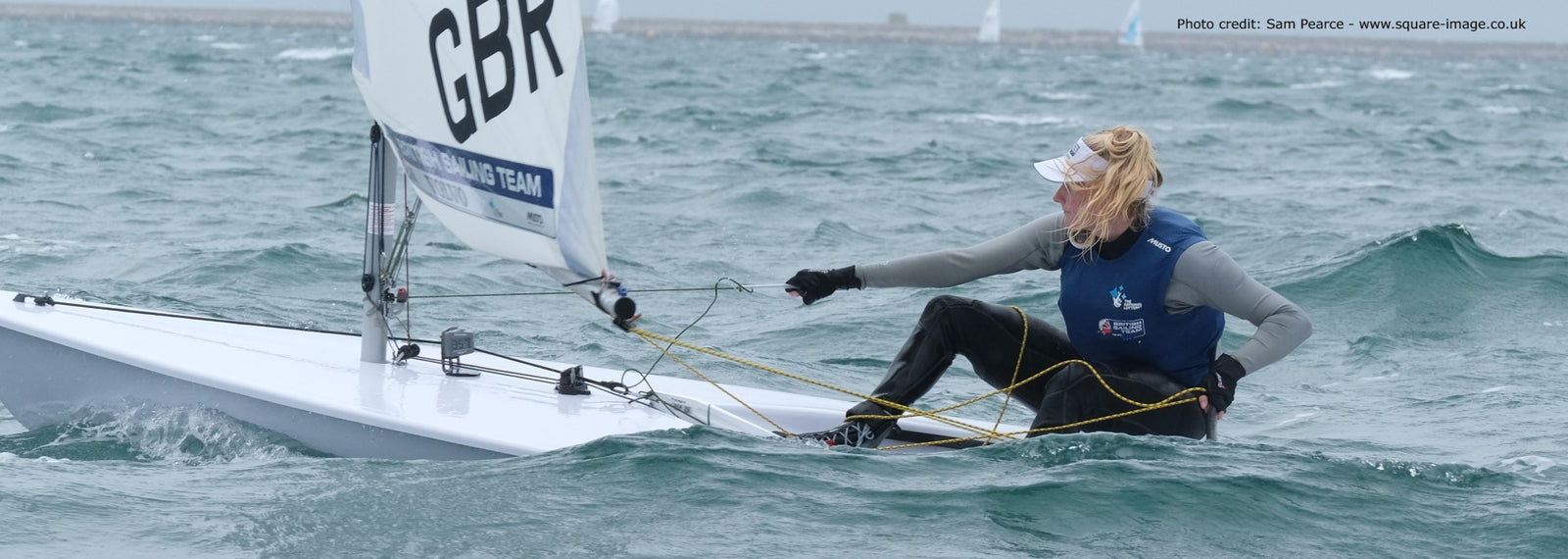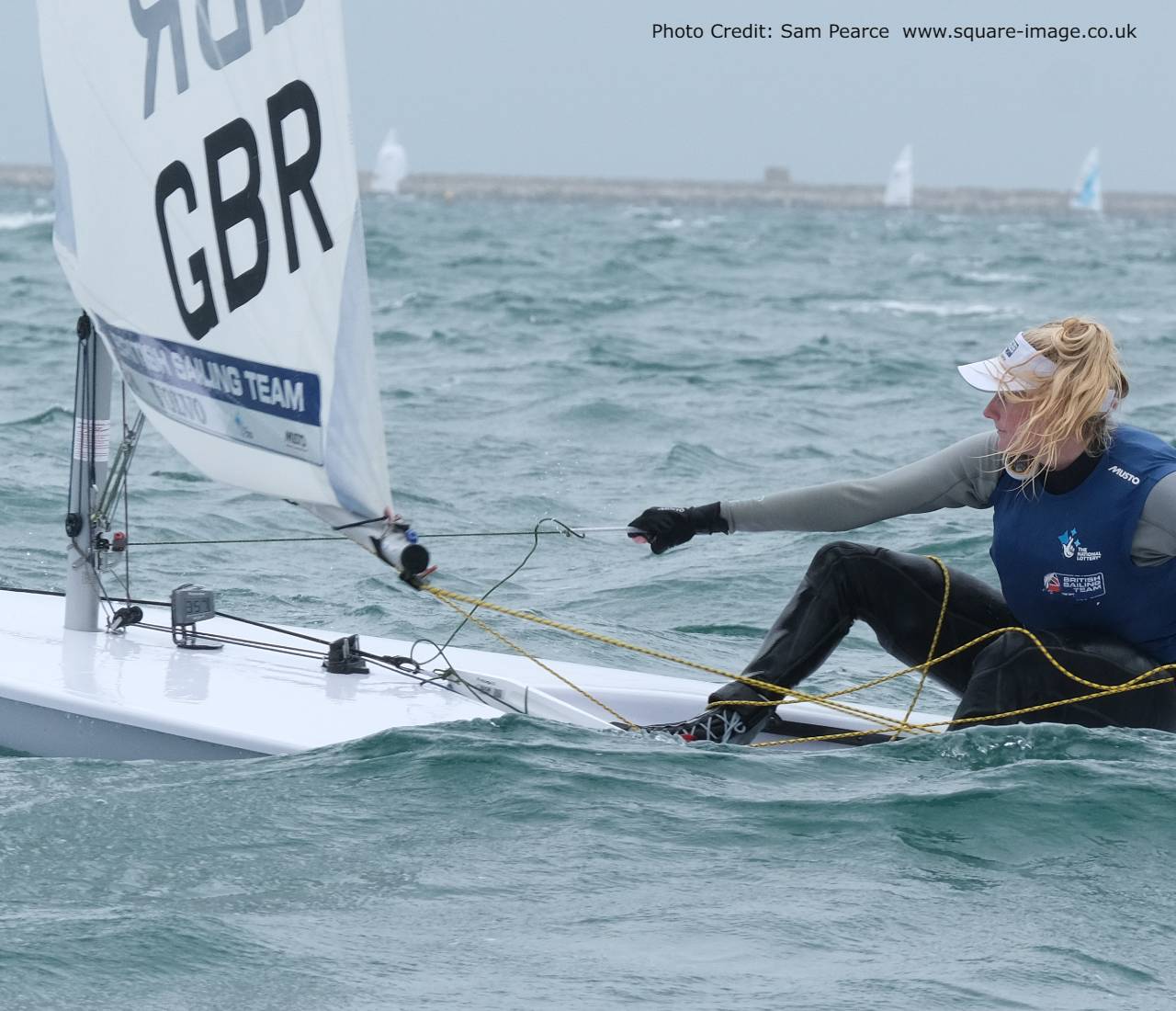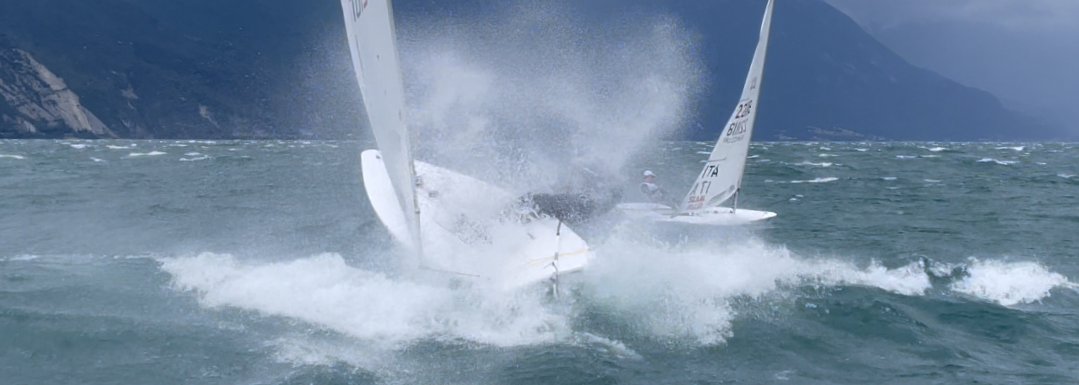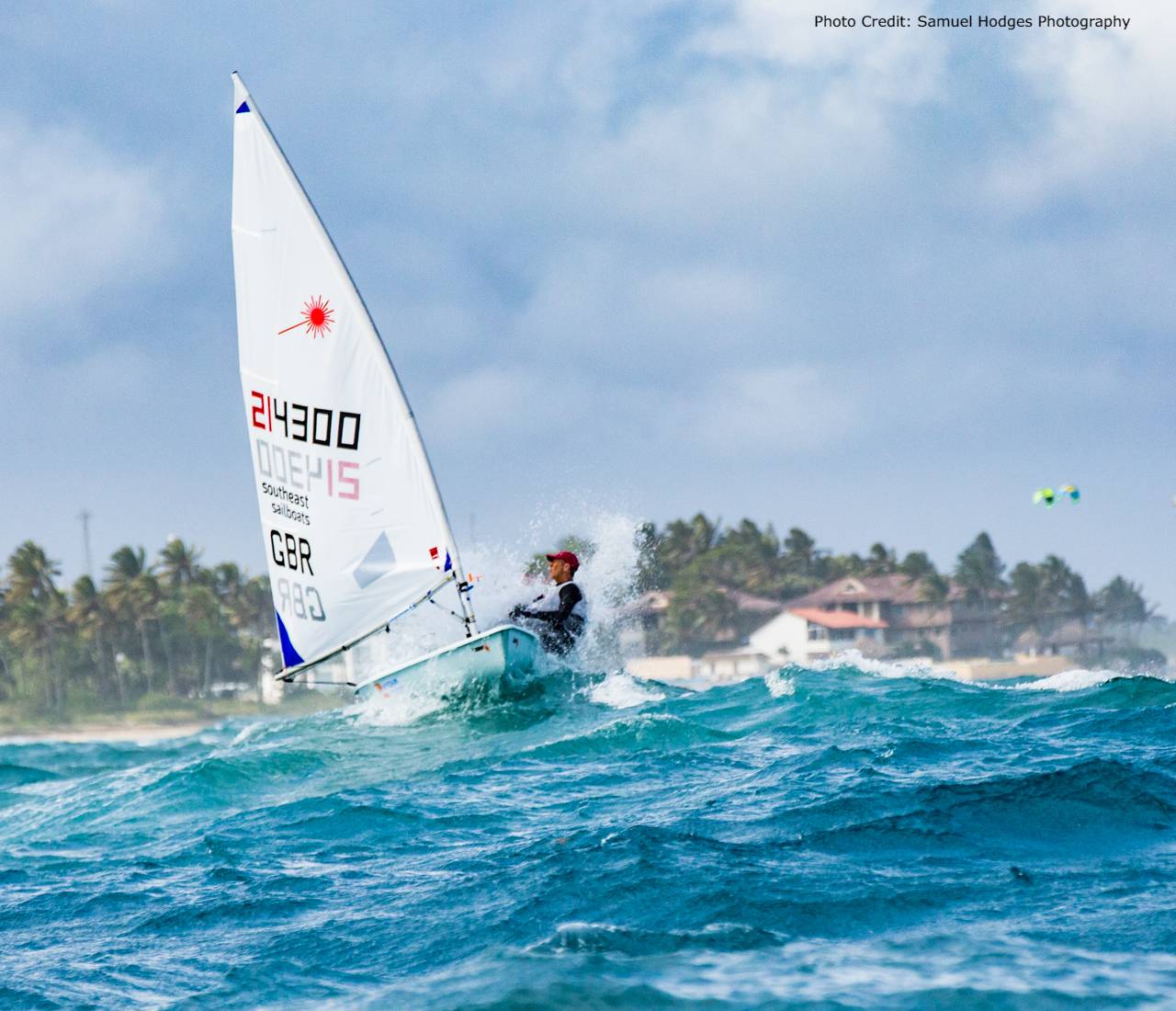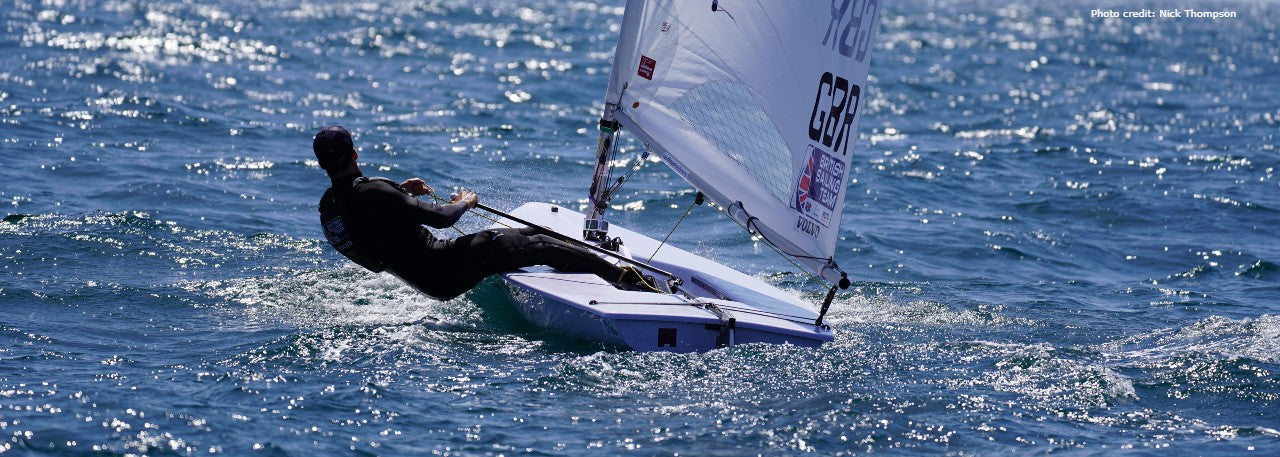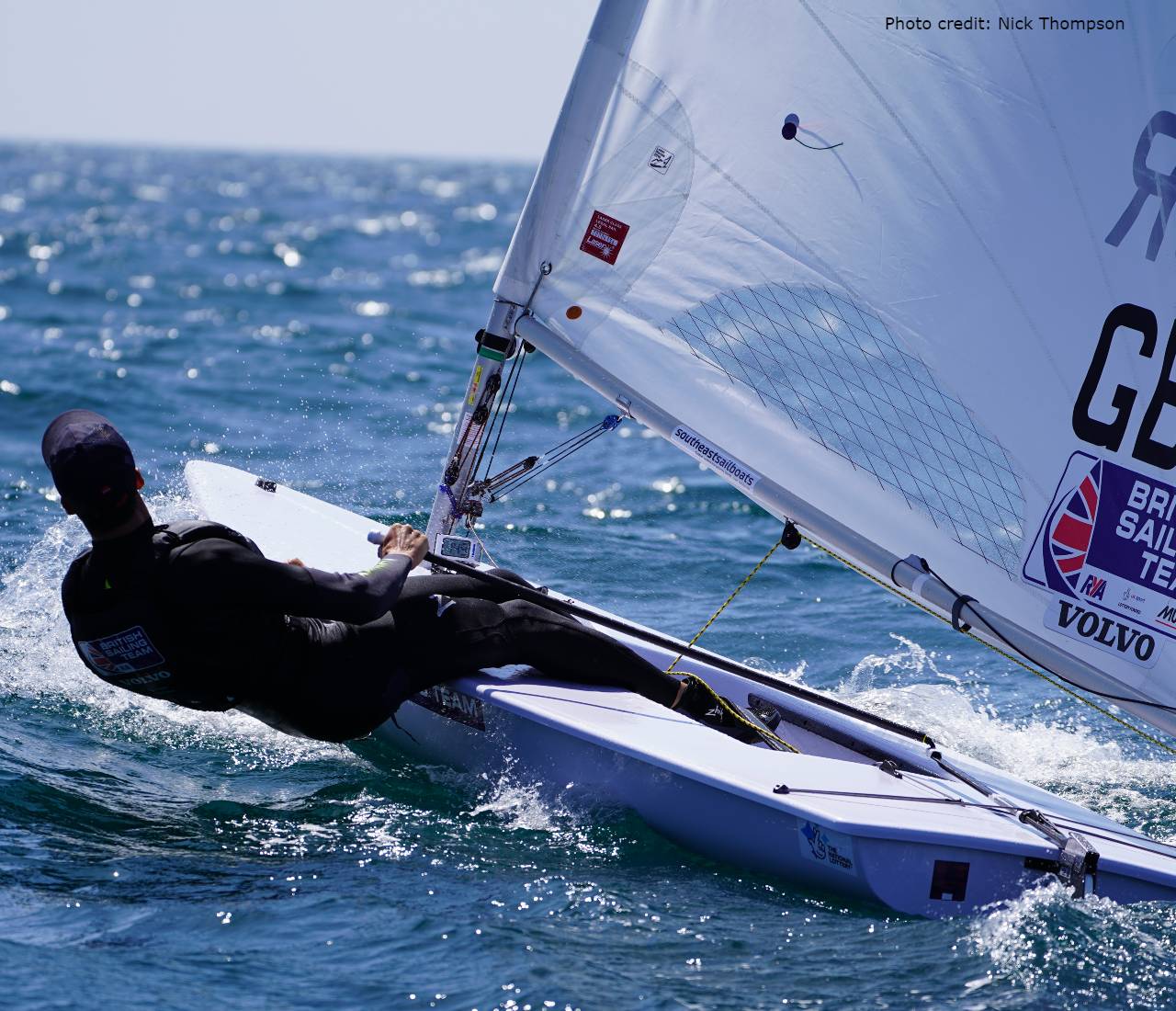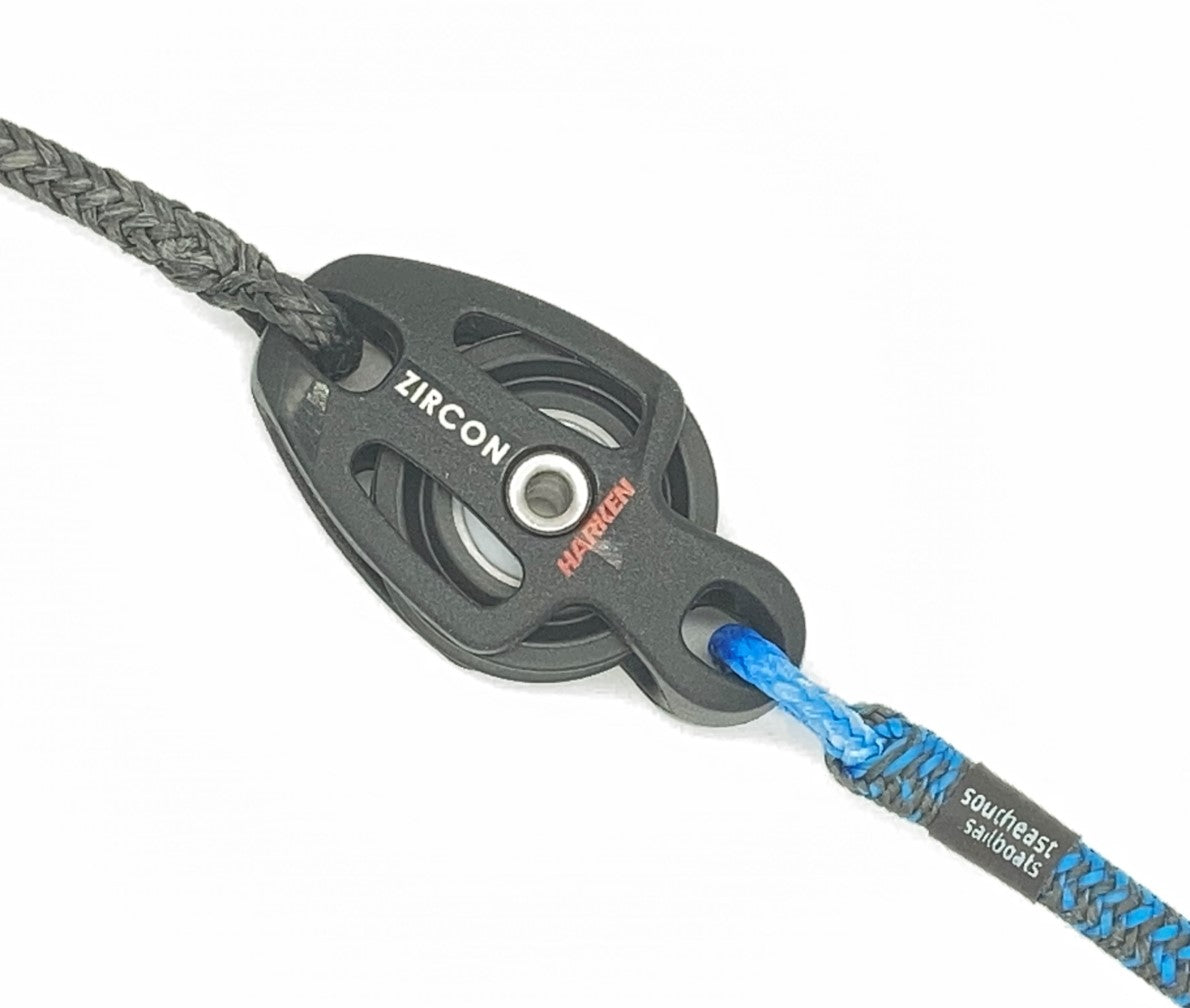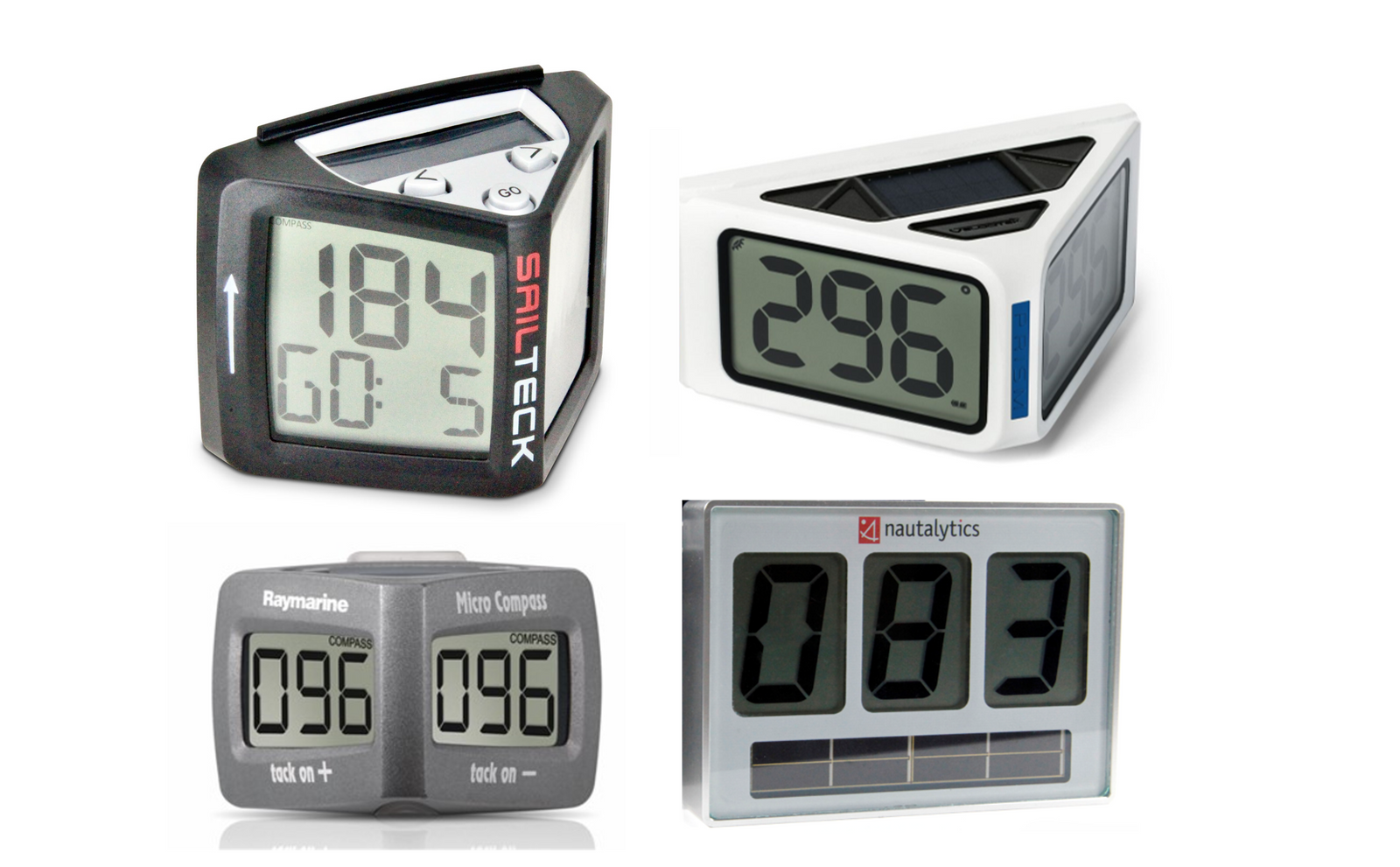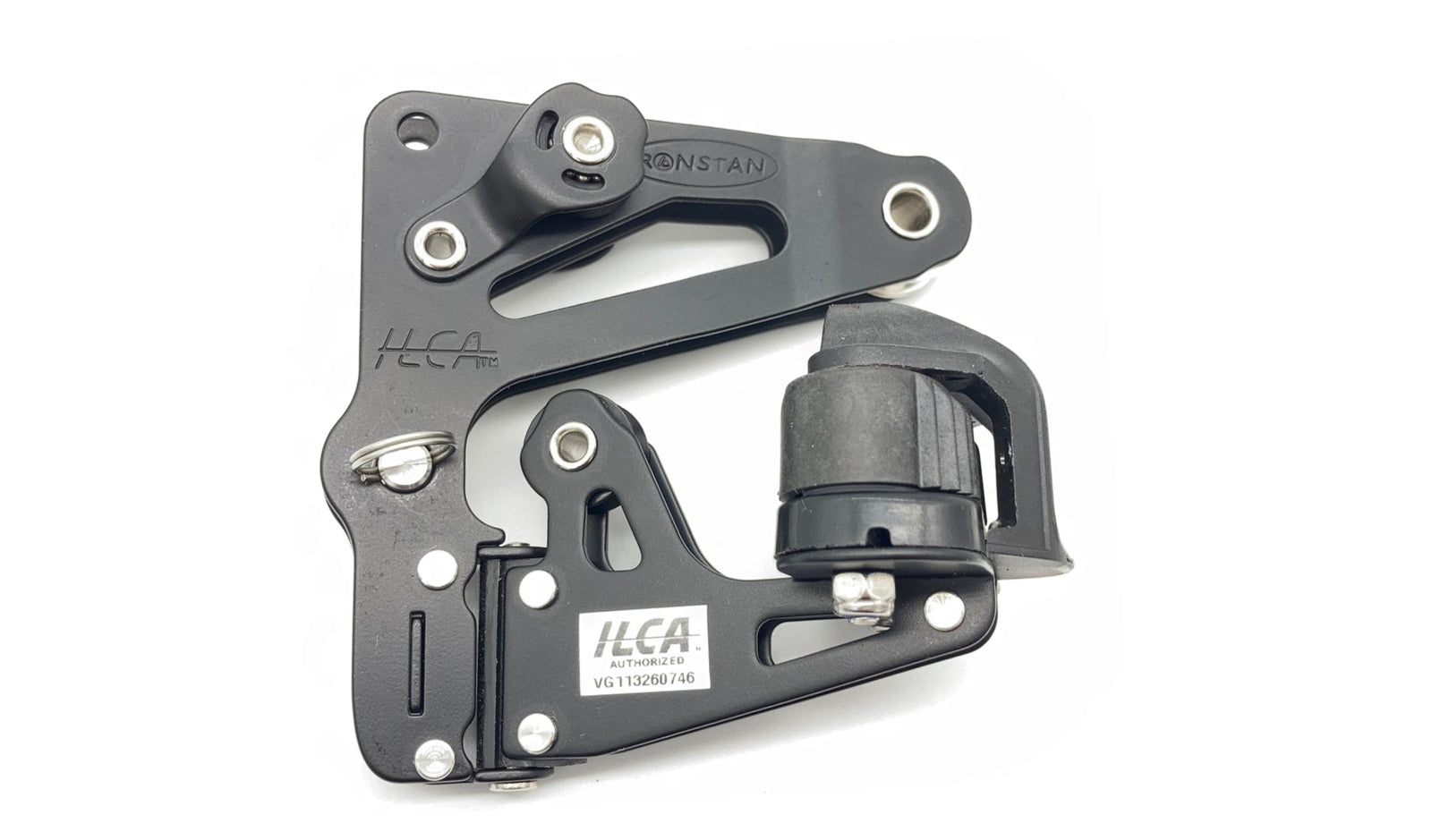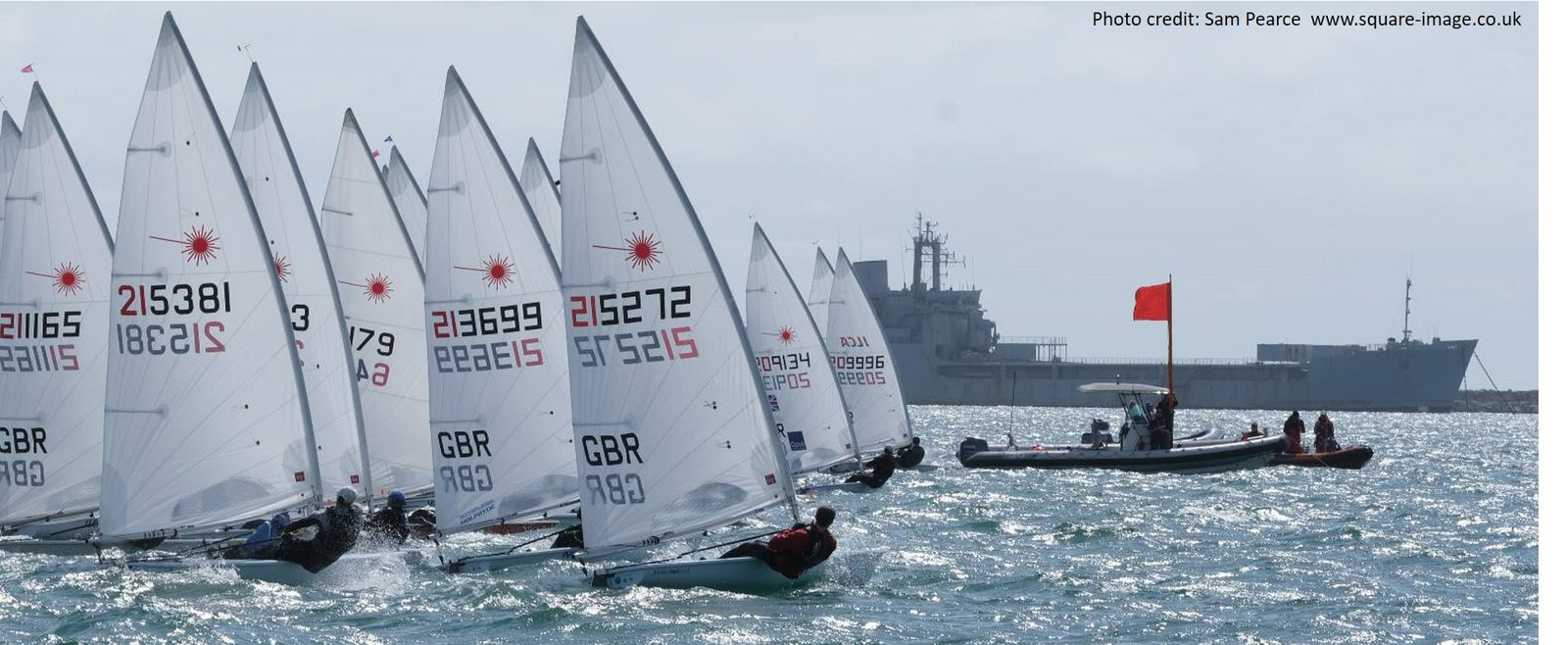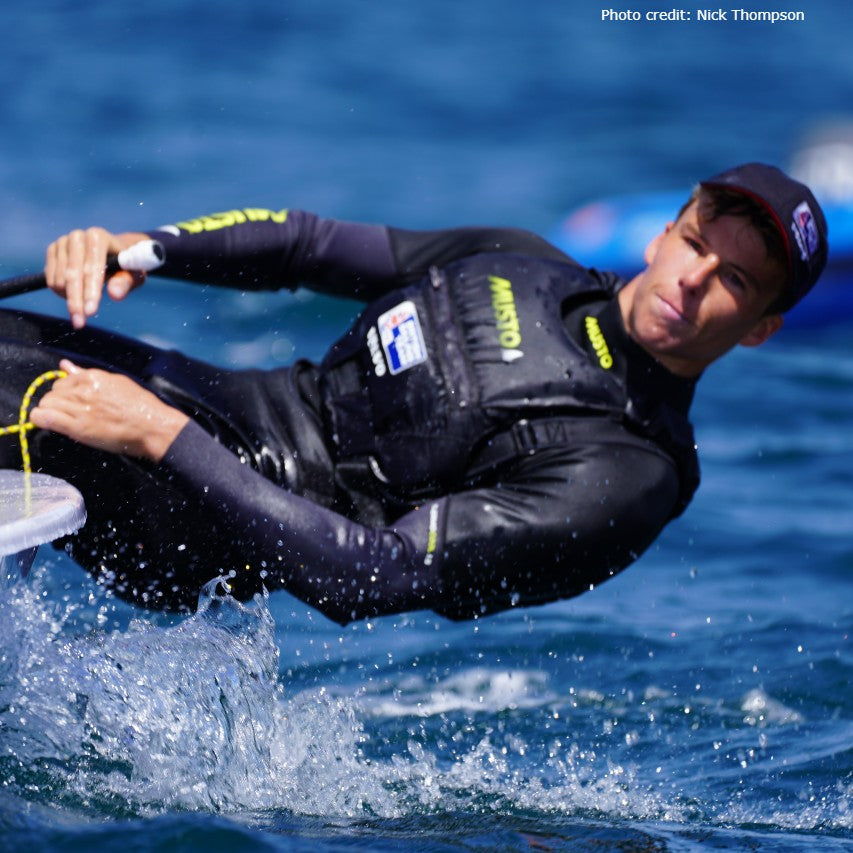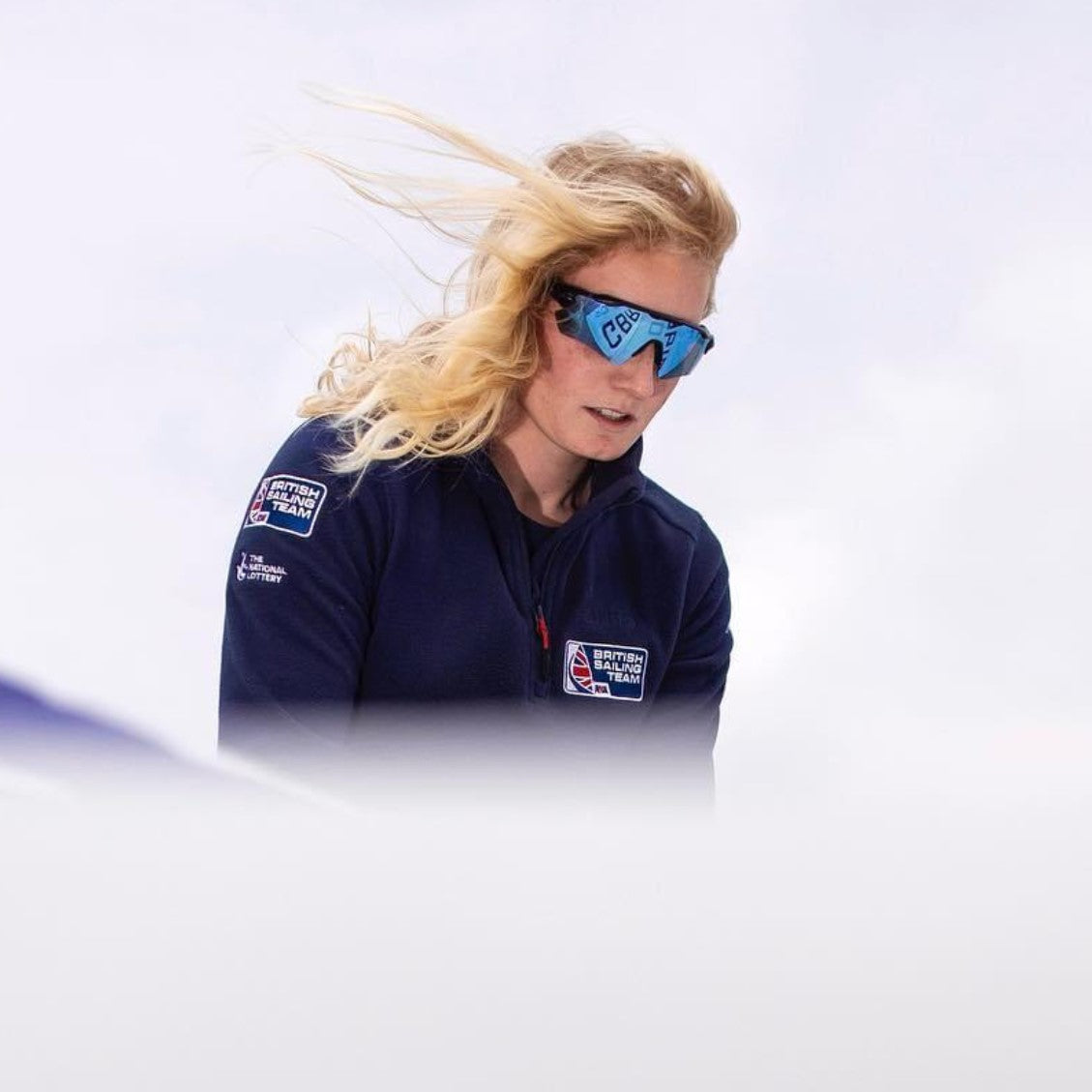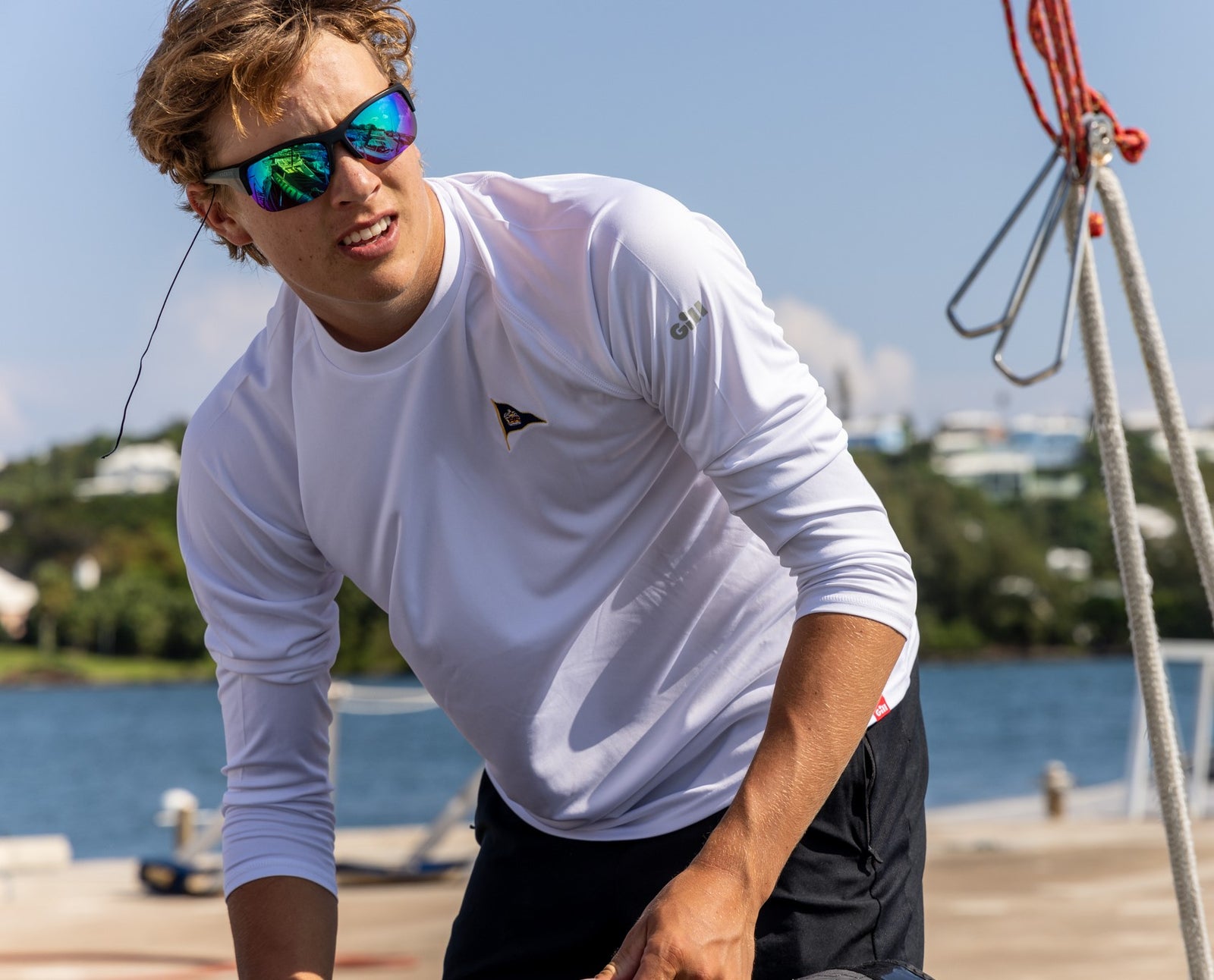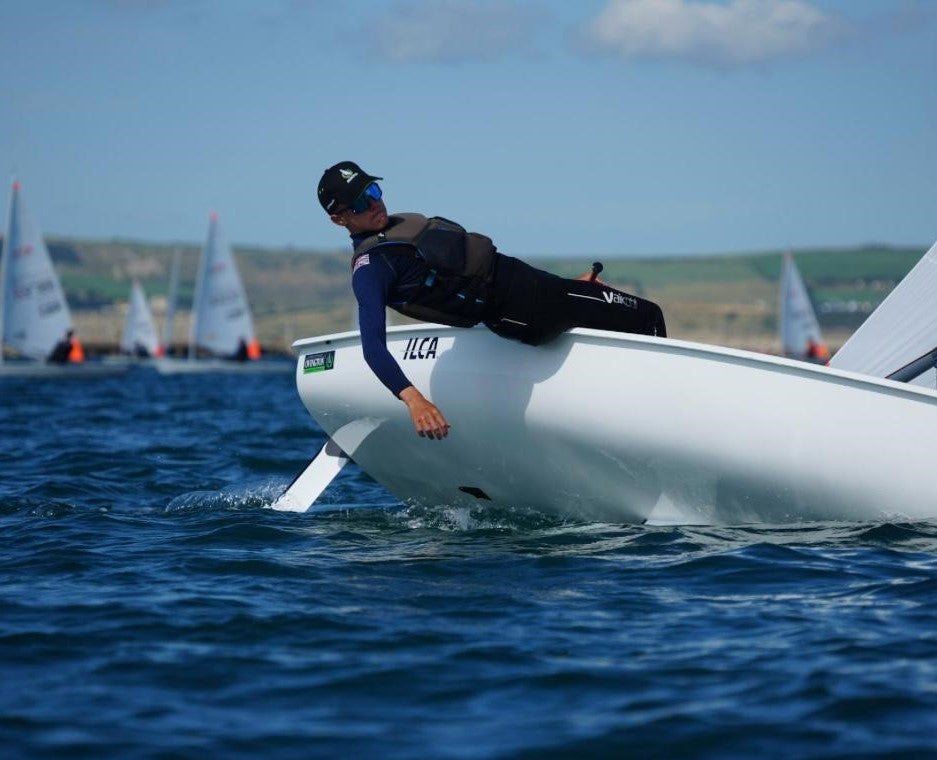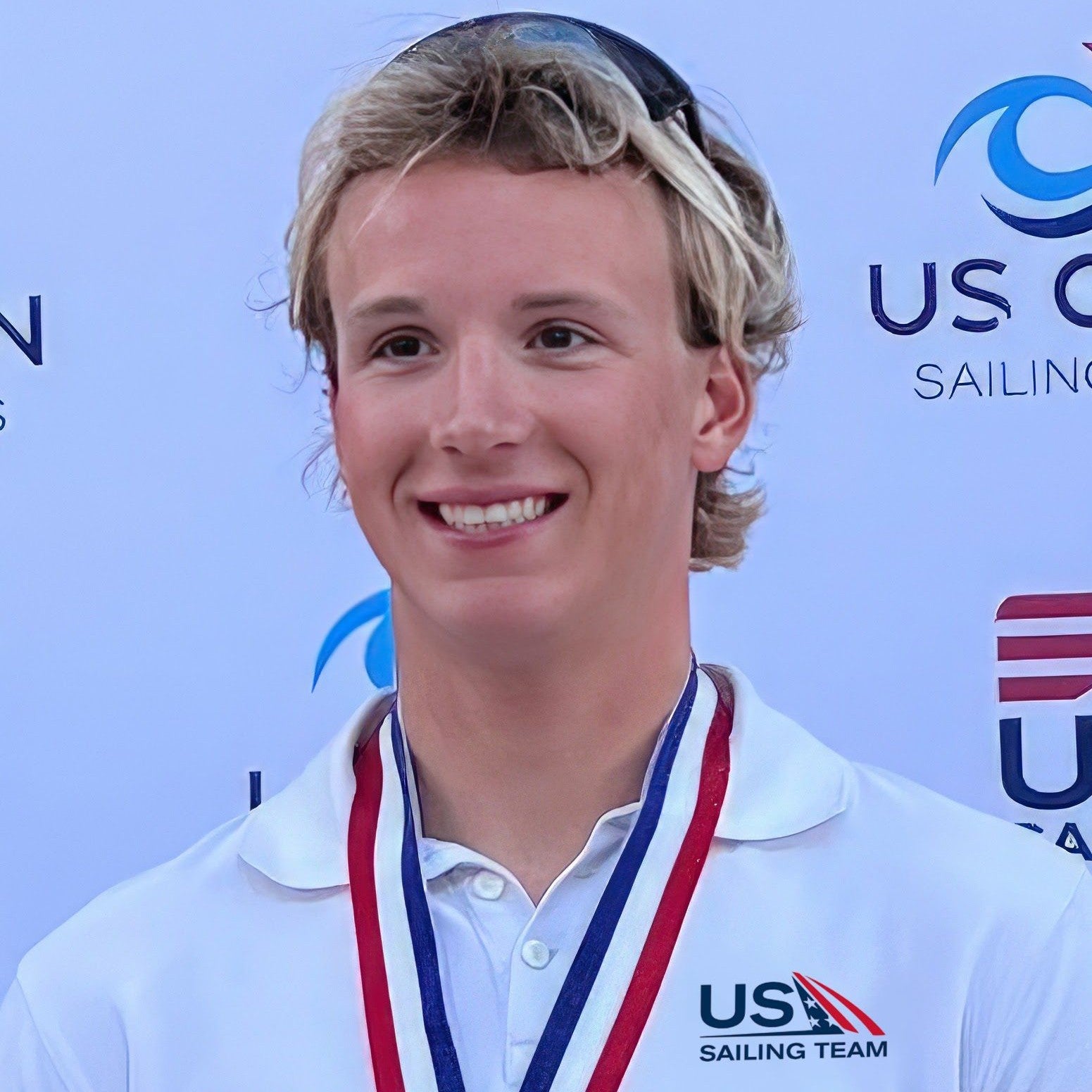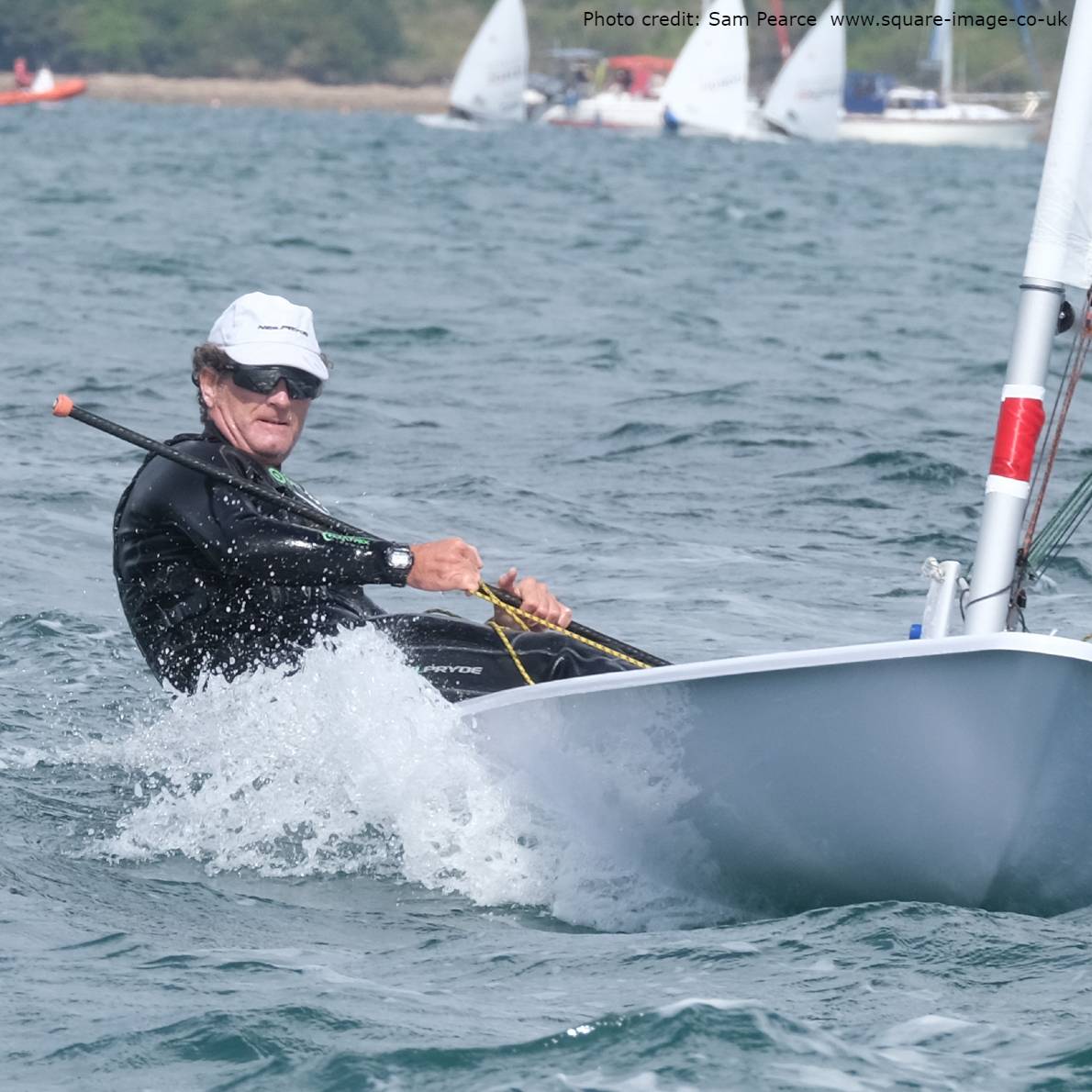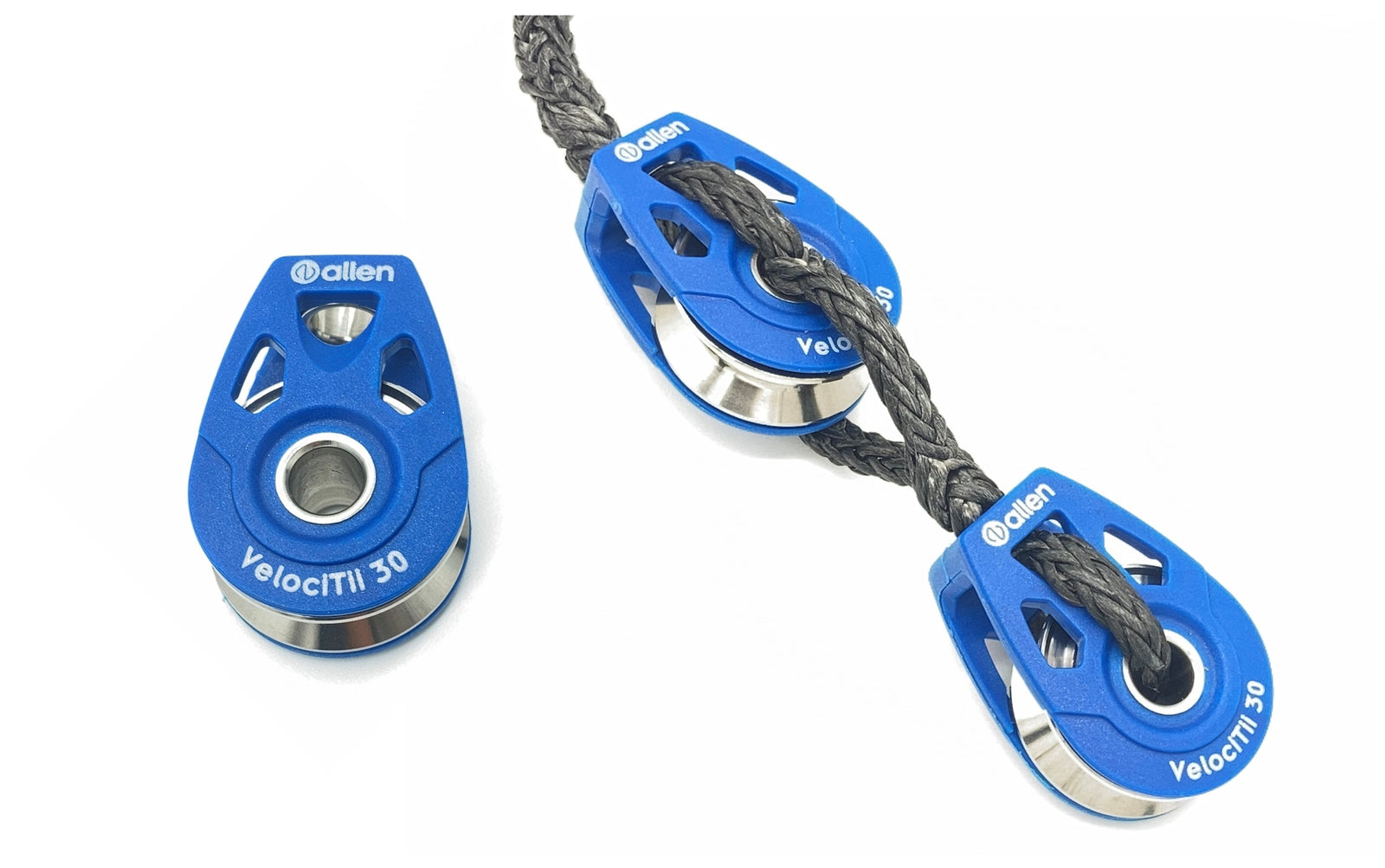
New Allen 30mm VelociTii Blocks - Exclusively from Southeast Sailboats
Custom made by Allen for Southeast Sailboats these new blocks feature a titanium sheave and ceramic bearings for ultimate performance and light weight. Perfect for your downhaul/Cunningham system. We have the blocks in stock as well as 8:1 and 10:1 systems using them.
NEW! Harken 29mm Zircon Blocks
The best just got better! Southeast Sailboats outhaul systems are now available using the new Harken 29mm Zircon blocks. At the core of Zircon performance are industrial ceramic ball bearings mounted inside caged races. The cages keep these bearings separated so they don’t bunch, touch, and stop each other. The result is the most efficient small boat block Harken has ever made. We have the 29mm Zircon blocks in stock, along with outhaul assemblies and complete systems using these great blocks.
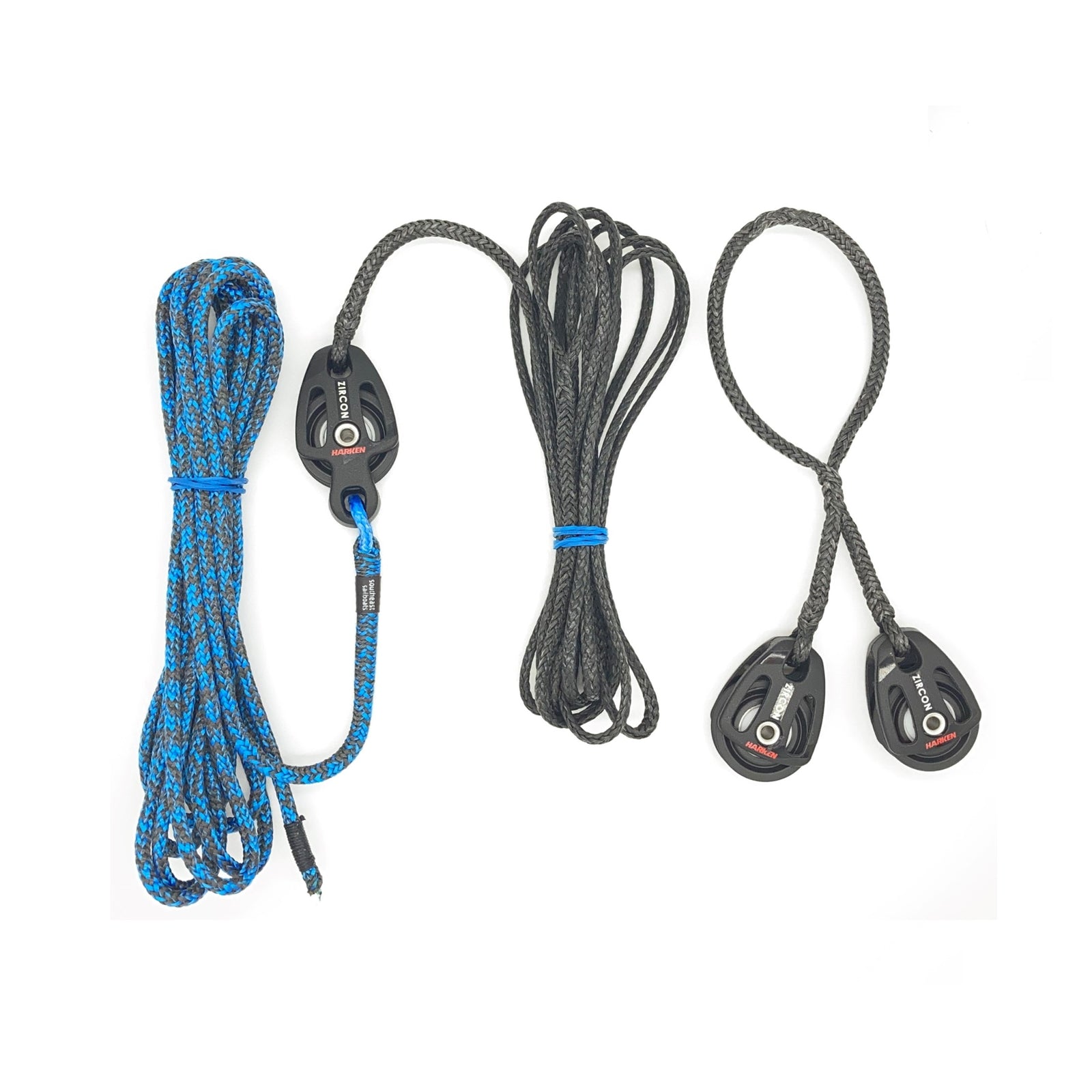
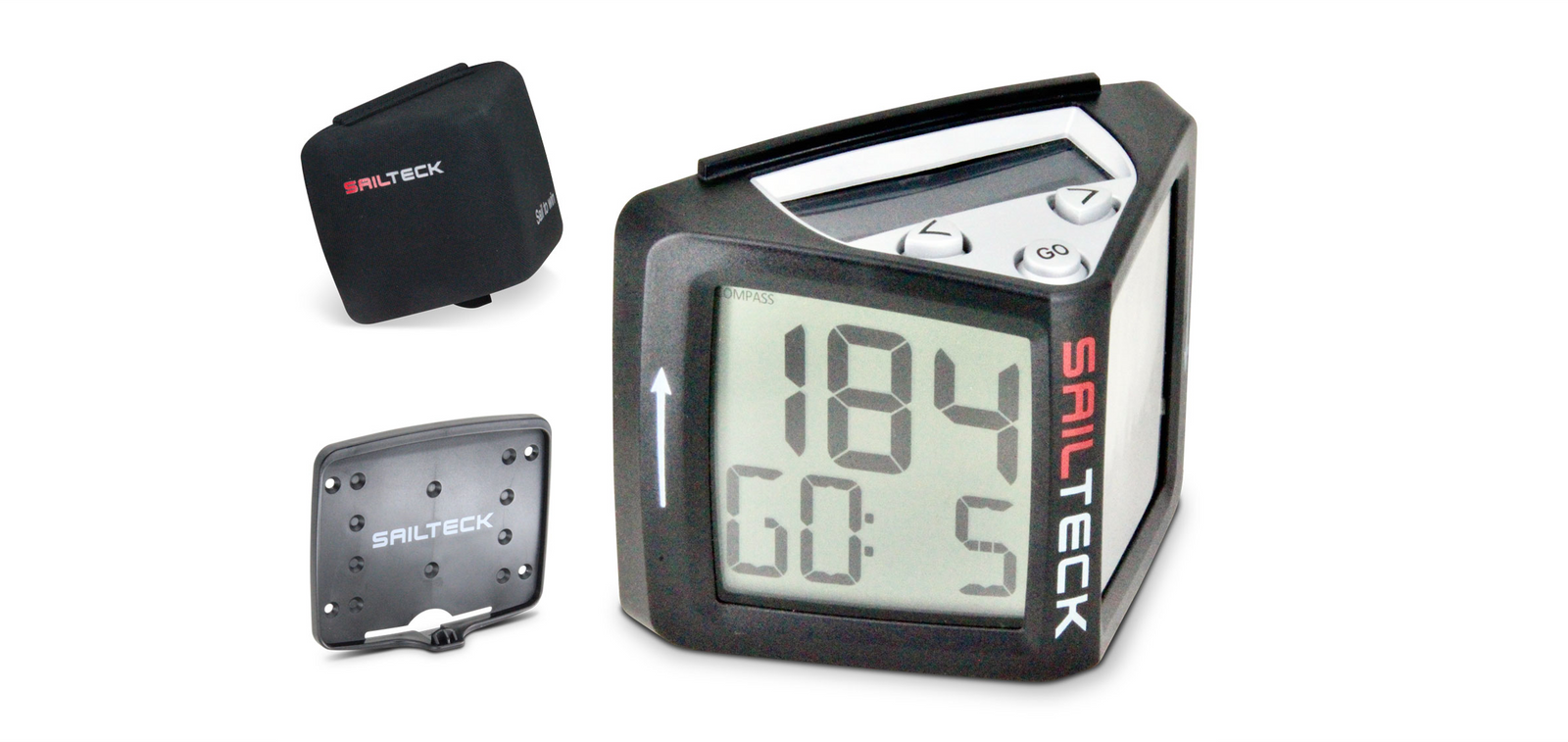
New - ILCA Rule 22 Approved Compass
Approved on the 8th October this new compass has a two line display. The top line can display either heading or tactical modes. The lower line is used for the easy to use countdown timer. In Stock!
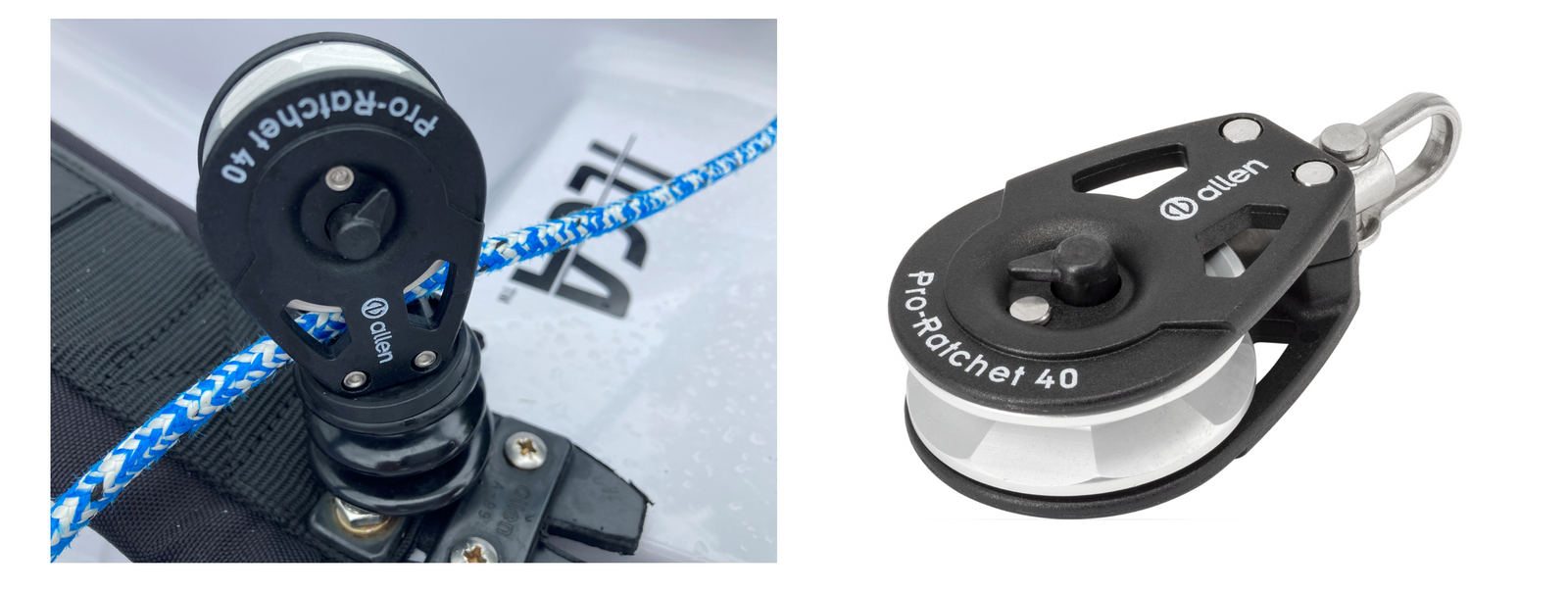
New! Allen 40mm Pro Ratchet Block
New from Allen is this great 40mm ratchet block. I have been testing/using this block on my own ILCA for the last 2 months and I just love it...
New - Two Piece Rooster Travel Tiller Extension
Rooster tiller extension that comes apart into two roughly equal halves that will fit within a smaller bag for easier travelling! In stock - limited quantity available in both 19mm and 22mm versions.
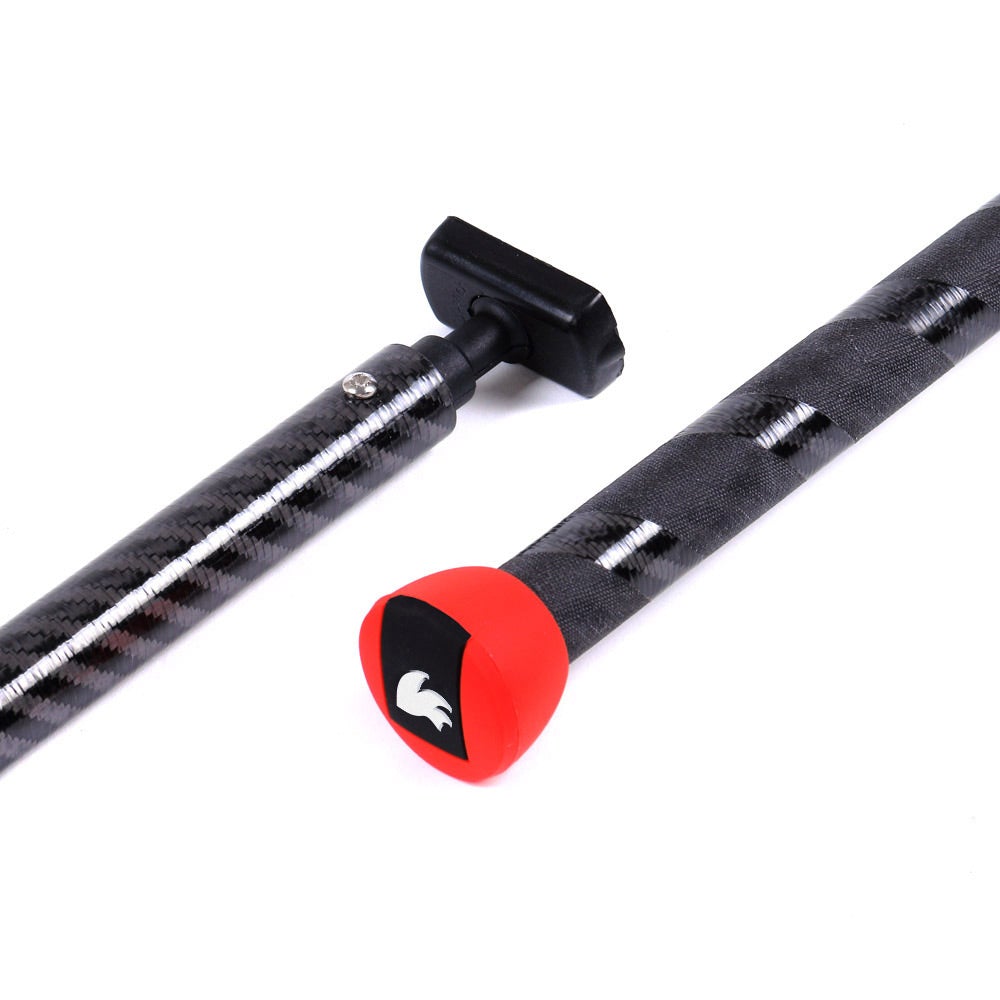
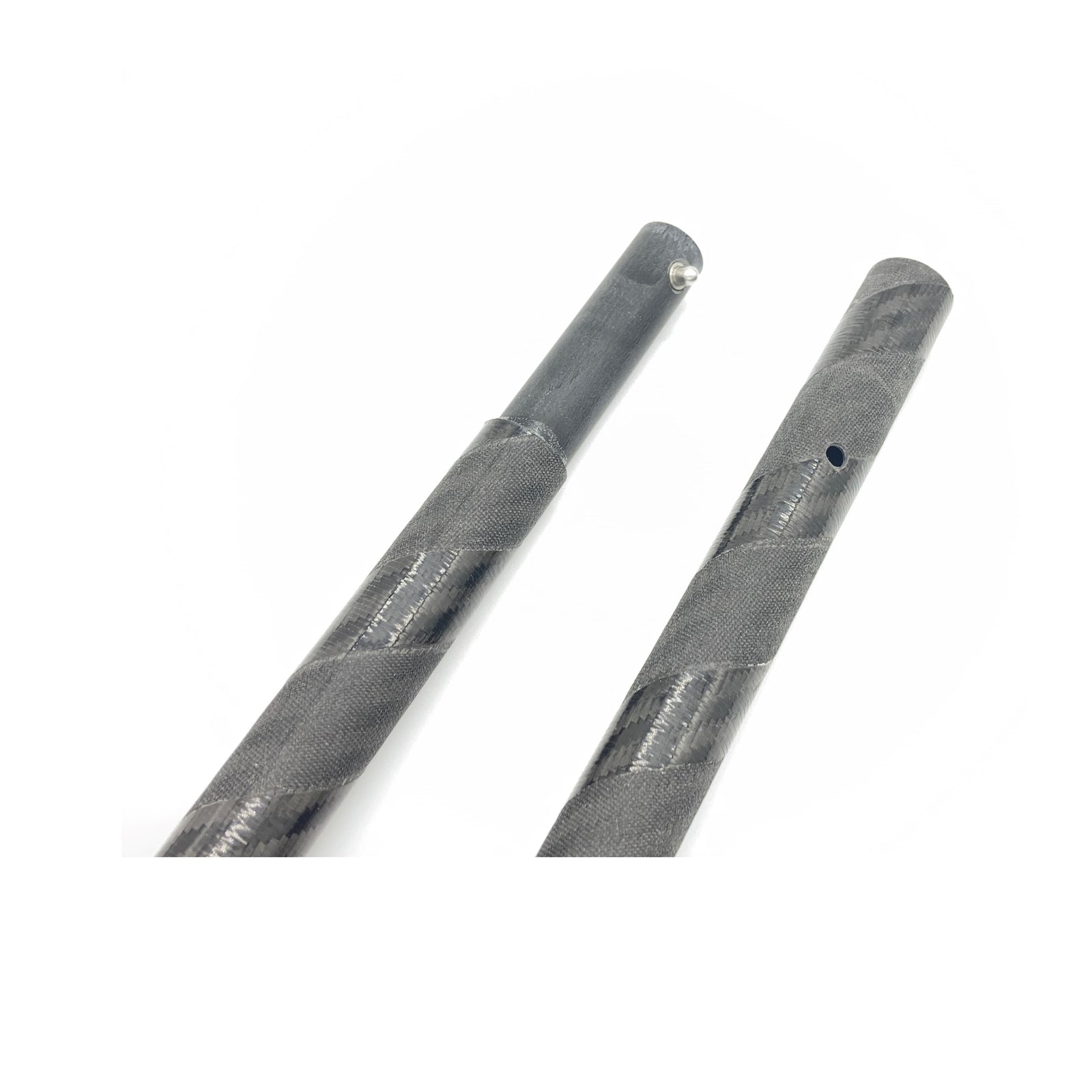
It was a pleasure to be invited by the Harken top team to visit their headquarters and factory in Pewaukee, Wisconsin USA. Southeast Sailboats works closely with the worlds leading manufacturers in helping influence the design and test upcoming products. These close relationships help keep Southeast Sailboats at the forefront of ILCA rigging.
A factory tour, plus in-depth discussions on a number of areas, made this a great trip. Many thanks to Harken for their hospitality.
Updated October 2024.
When the ILCA Rule 22 change came into effect in 2018 allowing the use of electronic compasses, the Raymarine MicroCompass (more commonly known as the ‘TackTick’) quickly became the default choice amongst most of the top sailors – driven in part by the fact that when the rule change came into effect it was, alongside the Nautalytics simple compass, the only choice. Around a year later the Velocitek PRISM was released – a state of the art compass . Now (8th October 2024) a new compass - the SailTeck - has just been added to the list of ILCA Class legal compasses.

Above - left to right - Raymarine MicroCompass; Velocitek PRISM; SailTeck. All shown on the optional CarbonParts mounting bracket.
How do you decide between these four ILCA Rule 22 approved compasses? This article looks at the factors involved, but first why choose an electronic compass? Over the last 6 years the majority of sailors have moved from analogue to electronic. At the Paris Olympics all 20 medal race competitors were using either the PRISM or the TackTick. Electronic compasses are smaller, lighter, but it is the ease of reading that is the main reason – the digital display is much clearer than the graduations on an analogue compass, isn’t subject to the variation dependent upon viewing angle, and is faster to respond to heading change. All these lead to electronic compasses having greater useable accuracy which make it far easier to see heading changes.
So, what are the factors that need to be considered in deciding which electronic compass is right for you?
MODE – The first and maybe the most important factor is whether you want to use your compass in tactical or heading mode. The vast majority of analogue compasses used on the ILCA had a tactical scale (normally with a secondary 0-360 scale), which divided up the 360 deg scale into 20 or 24 segments. This in theory, gives you the same or similar number on either upwind tack meaning that it easier to remember – for example 2 on starboard/2 on port (for the Plastimo), or 2/12 (for the Silva/Nexus). The secondary 0-360 scale helped with head to wind and line bias. These analogue compasses assumed an 90 degree angle between tacks. In theory fine, but the tacking angle on the ILCA is dependent on the wind strength, is affected by wave skew and any ‘tide wind’ generated by current flow. So your tacking angle may not be 90 degrees and may be also skewed relative to the true wind direction from one tack to the other.
The TackTick and now the SailTeck are the only two compasses ILCA approved electronic compasses to offer a tactical mode, and the tacking angle can be adjusted on the water to get the same numbers on each tack. However, it still assumes a constant angle from one tack to the other, so if there is skew from one tack to the other the numbers displayed won’t reflect the true wind direction. In tactical mode the sensitivity can be adjusted, with most sailors choosing 5 degrees to avoid being distracted by minor shifts.
Some top sailors use the TackTick in tactical mode and others in heading mode. However, I believe that the complexity of using tactical mode simply and effectively, especially when electronic compasses offer greater useable accuracy, has resulted in more sailors moving from tactical mode to heading mode.
Heading mode displays the bearing that the boat is travelling on, so the numbers on one tack are very different from the other and as a result there are two ranges of numbers to remember (or write on the boom)! All four compasses offer heading mode. One potential downside of heading mode on the TackTick, PRISM and Nautalytics compasses is that they display 1 degree heading changes which means that in reality the display is changing a lot. You need to make sure that you are not looking at the compass too much! The PRISM compass does have an adjustable damping rate to help this aspect – the greater the damping value the smoother the heading change will be, as it slows down the response to a change in heading - this is especially important in large waves. The SailTeck compass is unique in that you can adjust the step size from 1 to 5 degrees to avoid being distracted by minor shifts.
TIMER – The rule change also allowed the use of a countdown timer to be integrated with the compass. This is a feature that is included in the TackTick, Nautalytics and SailTeck compasses. The timer on the Nautalytics and SailTeck is simple to use, with a sync function that syncs down to the next minute like most sailing watches. However you may find using the timer mode on the TackTick confusing as the sync function works differently (it syncs to the nearest minute, so it may sync up rather than down). Some people use the timer functions on these two compasses but when the timer is running you can’t see heading information unless you manually change modes. When the timer reaches zero the TackTick compass reverts to the tactical or heading mode that you were in. The Nautalytics reverts to its heading mode. The SailTeck is the best if you want an integrated timer function. It has a two line display, so that you can see the compass function on the top line of the display, and the countdown on the lower line.
DISPLAY – The size and readability of the display is another important factor. The relatively small display on the TackTick probably reflects the age of the design. The viewing angle is also quite small meaning that if you are either sitting in the cockpit in very light airs and looking down, or doing a head to wind and looking straight at the compass from the middle of the cockpit, you will find it difficult to read. The display on the PRISM is both larger and has a far better viewing angle and a non-reflective coating. The display size on the SailTeck is also larger and similar in size to the PRISM. The single very large display on the Nautalytics is probably the clearest, but it is a large compass in comparison with the lower profile, sleeker TackTick and PRISM.
If you sail using polarised sunglasses the display on the TackTick is like a lot of LCD’s, unreadable. Only the PRISM, SailTeck and Nautalytics are compatible with polarised glasses.
BATTERIES – All three compasses have inbuilt batteries recharged via solar cells. The Nautalytics batteries are cost effectively replaceable. The earlier PRISM compasses had replaceable batteries. From early 2021 to mid 2023 PRISM compasses were totally sealed and batteries are not replaceable. The latest generation of PRISM compasses have a USB charging port as a backup in case solar charging hasn't been sufficient to keep the battery charged or you have had it stored away for months. The SailTeck compass relies on an oversized solar cell to ensure that it stays charged even in poor sunlight.
MOUNTING – From a mounting perspective, for the popular TackTick there are a number of mountings available from third party manufacturers such as CarbonParts. The SailTeck compass will also fit the CarbonParts EC2 mounting. For the PRISM mountings are available from CarbonParts and Velocitek. For the Nautalytics the manufacturer offers a mounting. Most sailors choose to mount the compass as far forward as possible without fouling the vang fitting or deck blocks, with the control lines running through the mounting so that if it does become dislodged during sailing the compass stays on the boat! If you want to mount it in front of the mast, attach a security line or, if you run your centreboard elastic to the bow eye, pass that through the mount. Most mounts attach using 3M DualLock – best described as a sort of industrial strength Velcro – it really works.
So how do you choose between these electronic compasses?
About Southeast Sailboats…
Southeast Sailboats is a leading supplier of world class control line systems and electronic compass / mountings for the ILCA/Laser. We supply the PRISM, SailTeck and TackTick ILCA Rule 22 compasses and associated mountings and we deliver worldwide.
A question that we get asked a lot. Is the new Ronstan kicker/vang lower assembly any better than the Harken assembly? I have provided my thoughts in previous newsletters but I thought it was about time to ask Micky Beckett his thoughts – he has sailed with the Harken assembly day-in/day-out for over a decade, but has recently switched to the Ronstan lower. Why? Read on…
“Ronstan have recently introduced a new class legal vang (kicker) base unit, as an alternative to the existing Harken unit which has been around for some time. The immediate difference is a more compact set-up, with the 4 turning-points and cleat contained in a much smaller piece of hardware. The matt-black finish looks quite smart too.
The achilies heel of the Harken block was always the single block that the primary line ran through, which was insufficient for the load it was carrying and so contributed to the lion’s share of the friction – which for a system that is often used as a 15:1 setup – there is already plenty of. This has been replaced by a wider diameter block which provides a much lower-friction turning point. The other main change is that there are there are two small blocks to carry the secondary line out of the unit through the cleat, rather than having a single block then a fairlead which would cause a large amount of friction when you pulled the kicker line at any kind of angle to the boom (e.g just before rounding the leeward mark).
These two changes do amount to the vang being a lower friction system, which is a good thing. There are occasional moments where the two side blocks for the secondary line protrude out and interrupt the outhaul or downhaul which run next to it, which whilst inconvenient isn’t disastrous. Equally there has to be a crossover in the threads of the secondary line due to the changed position of the blocks; annoying but not prohibitively so.
On balance the block is, not surprisingly, an improvement, and in the time I’ve been using it hasn’t showed and signs of breakage or undue wear.”Micky Beckett
The only thing that I would add to what Micky has said is that I have found the Ronstan unit to be much easier to uncleat than the Harken, especially when you have a lot of kicker on. I had a ‘scary moment’ a few weeks ago coming into a crowded windward mark on the port layline, where the combination of my weaker/golfers elbow left arm struggled to uncleat it whilst I was concentrating on the line of starboard tack boats just ahead!!
We stock the Harken and Ronstan lower assemblies and also have a wide range of fully rigged kicker/vang systems using both the Harken and Ronstan lower assemblies.
Meet our Sponsored Sailors
World Class Rigging and more - Developed by Southeast Sailboats, tested by our sponsored sailors, used by club sailors to Olympic medalists.
What our Customers Say
Don't bother shopping around, just click and order. Max has the answers for your ILCA rigging needs. Every design is well thought out. Southeast has become my go to place along with many others on my "Newsyletter" mailing list.
Stephen R.
ILCA 6, D5 Canada

Used new outhaul & Cunningham this afternoon for first time - both were perfect - thanks. The 'double-puller' outhaul is by far the best yet.
Rhys Griffiths
Felinheli, N Wales

Quite simply the most innovative and high quality Laser control lines I’ve ever seen. Great advice and service too from Max.
Gary H
Laser sailor, UK

Very good products for the laser, and a lot of nice control line solutions with good splicing.
Hermann Tomasgaard
Sailor, Norway

I love all your products. You guys are the best
Scott Williamson
Laser Fleet 10 Annapolis, MD USA

Once Max started building his kits, I stopped giving advice on rigging. Thanks to Max, there's now a standard for how Lasers should be rigged to optimize performance. Keep it up!
Vaughn Harrison
Olympic Laser Coach - Canada

Great service by south east sailboats. I made a mistake with my shipping address and Max helped me to fix it. Super thankful for the effort he put in!
Paul Hameeteman
Laser sailor, The Netherlands

Bought a new adjustable toestrap system a couple of months ago and have been amazed by how easy it was to install due to the provided instructions and also the high quality splicing will be buying from again
Lawrie Mather
England

A great service every time, the 8 to 1 downhaul looks amazing and was a great price much cheaper than anywhere else. Thanks alot Max
B Knott
Laser sailor, Sheffield

quick response and concern in clarifying the products ordered Cvvc clube vela viana do castelo
Sandra Vicente
Viana do Castelo Portugal

I like the focus of the website with many interesting ideas. The service was excellent! Many thanks.
Chris Dando
RVYC Commodore, Thailand

Would not hesitate to recommend Max and Southeast Sailboats for the quality of products, speedy dispatch and great communication. Will definitely be back to buy again.
Rich A
Laser - Northeast UK

Great website full of the right information and fabulous service and customer interaction.
Gareth Greenfield
Standard, Master, Oxford, UK

Great, efficient and friendly service. The "go-to" Laser place.
Robo
Great Grand Master, South Fremantle, Western Australia

Hello Max..... Awesome service! I submitted this order on Monday, you shipped on Tuesday and I received today, Thursday. A welcomed surprise with racing on Saturday. Not to mention that the systems are superb.....the workmanship flawless. Makes me feel like an elite sailor with all Southeast systems rigging in the parking lot which has translated to a more competitive mindset, smoother transitions and thus better finishes on the race course. Much thanks for upping US Laser sailors game!
David C
Masters Sailor, Boston, MA USA

This isn’t just a click and buy warehouse, they contacted me to explain the options available as I’d mistakenly ordered control lines all the same colour.
Jonny Mutch
UK

The Laser products are outstanding. Every detail has been thought through. You just know whatever you buy will work flawlessly.
Sean Svendsen
Parent of youth sailor. San Francisco, USA

I ordered a downhaul system in 2018, and was so pleased with its elegance and ease of use that I soon ordered an upgrade for my outhaul. As it was a custom order to replace part of the system, Max gave me excellent advice on what the options were. Now that the older parts of the outhaul are wearing out, I have ordered a complete new quick release system. It is a joy to be able to rig the Laser so quickly and reliably, and I have received many compliments on these systems from other sailors far more experienced than I am.
Barbara C.
Eilat, Israel

I am using Max' vang and Cunningham system and love it. It is very easy to rig and well thought through. The materials (like ropes) Max is using are under constant review and one can be sure to get the best quality for the price. There are always new little things being invented that make our life easier. Keep the good work up.
Alexandra Behrens
Masters sailor, Hamburg, Germany

Max is so easy to work with and his products are great! He is very responsive in answering questions.
Michael Colbert
Masters sailor, Vienna, Va.

Always use Southeast Sailboats for ropes on my dinghies, won't think of going anywhere else, right kit for the right job on the boat, customer service is superb.
Rob Cage
Laser Master, UK

Max’s controls have made sailing the Laser easier, I’ve been using his systems for 3 years and no matter what, I’m happy to accept any innovation of his and trust him fully. His outhaul system is the only system that I know works and consistently works. Max’s support has been key to me getting to where I am currently, his support and controls have allowed me to be consistent with my settings no matter where I am in the world.
Will Symonds
Radial youth sailor, Truro, Cornwall/ Hong Kong

Apart from making great controls (kickers, outhauls etc) especially for the Laser, Southeast Sailboats also give great advice. And as Max Hunt attends and competes in many Laser events, if you live in the UK, you might be able to arrange to meet Max at an event, and get further rigging tips. Great kit and great service!
Max Steele
New Laser 4.7 sailor with multiple RS Tera titles and world champion medalist, United Kingdom

Max is a perfectionist - and it shows. His Laser kit is clever, efficient and clearly researched and tested to the nth degree. Even if it's just the cunningham and outhaul from his big, growing range, the investment will be well worthwhile. The overall service is great too.
Sean Craig
Radial Masters sailor, Dublin, Ireland

What a great little company that provides beautiful, (yes beautiful), products especiall the rope kits. Personal service and great comm's. Really easy to use web site. Specialists in what they do and you can tell!
Pete Hallitt
Yorkshire, United Kingdom

Good quality, quick delivery, reliable in use, different options giving possible to make own choice
Dejan Suboticki
Laser master sailor, Norway

I have only quite recently found Southeast Sailboats and the things that stand out for me are the attention to detail in the products and how they are described, and the communications. Max is very quick to respond to queries about products or orders. Great company. Would definitely order again. Thanks.
Aaron
Laser / ILCA, London UK

Great service from Max every time. The most important thing is that systems work, are very neat, and each small change and new idea so far was an improvement. Good website as well, easy to use, with useful advice from the people at the very top of our game.
Joza Cic
Master sailor, United Kingdom

Really pleased with the outhaul, downhaul and kicker systems they have speeded up rigging and ease of adjusting sail trim. The quality and speed of the service is excellent.
Matt
Standard, Holmfirth West Yorkshire

Specific (and clever) solutions for the laser, and customizable to the taste of any laser sailor. - very good advice on ropes. - reduced selection of really good products, so I don't waste time comparing with bad products on the same site. - economic shipment options. - fast and friendly response from Max when I have any doubt.
Manuel
Canary Islands, Spain

Fantastic kit (8:1 downhaul, Outhaul and double puller and kicker) that allows accurate sail shape control with ease.Its so good you forget about it until you sail another boat and then the workload goes up, the control goes down and you start losing ground.I also thought that I can splice, but these systems are a work of art.Save up and buy the best.
James - Std rig - England
UK

Love the rigging and the great customer service.
Joe Seiffert
Youth sailor full rig, United States

Great Systems, my new 8:1 system runs amazingly and is a great help with the mk2 sail
EPB
Youth - Standard, Birmingham, UK

If you want your Laser rig to "just work at its best" then I cannot recommend Southeast Sailboats and their equipment enough. The service is excellent plus you get all the help and advice you need from Max. I made my last order late on Sunday evening and it was delivered on Tuesday morning. Could not ask for more.
Barrie Holden
Laser Radial and Standard Sailor, United Kingdom

Totally satisfying experience start to finish. I ordered two sets of custom control lines. All was delivered perfectly as ordered. Sailing with this set-up is absolutely fantastic. Easy to rig, smooth running, low profile, clean. We couldn't be more satisfied. Max is a consummate pro.
Keith Cruickshank
Master Sailor, San Diego, CA USA

I was very pleased with the line and blocks i received from SE. Fast, efficient and helpful service i ordered from Canada and had no delivery problems. A great resource
DE
213877 - a legendy, Calgary, Canada

I ordered several outhauls, downhauls and kickers for our club. I received several mails from Max containing detailed lists of options, making sure, that we received exactly what we required. The next day he built all our systems and the day after they arrived in Munich. This service is really awesome! And I also like the solutions. Especially the outhaul systems are the best I have seen so far. The only thing I am missing in the shop is a quick pin for the kicker.
Tobias
Munich, Germany
customerlink.com

It's a total pleasure rooming the Southeast Sailboats website and check out the super innovative control systems. Max seems to have a leg up on everyone else when it comes to offering the most recent and performant components. Just take the new Allen HL block that Southeast Sailboats was able to get specifically made for Lasers. What a huge difference from the stock solution!
Niclas
Master sailor, Portland, USA

Max has looked into all the little details that make a Laser easier to rig and handle and faster to sail. Southeast Sailboats offers great service and products with an unprecedented love for clever and thoughtful details.
Lutz Hirsch
Masters sailor, Germany

This is an easy click and pay way to get the very best lines and components for your Laser controls. The splicing is perfect, and the lines supplied are the best of the best. I have the full kit from Southeast Sailboats. It's clean and efficient. Full vang set-up results in noticeably less friction. Shipping is easy, even if you are not in the UK, like me in Florida. Takes about a week to get your order.
Dave Hillmyer
Masters Laser Sailor, Full Rig, Sarasota, FL









ZhikGrip™ II X Hiking Strap. Back in stock!
We have a limited number of these new wider hiking straps in stock. Our first batch sold out in week, so don't miss out!

